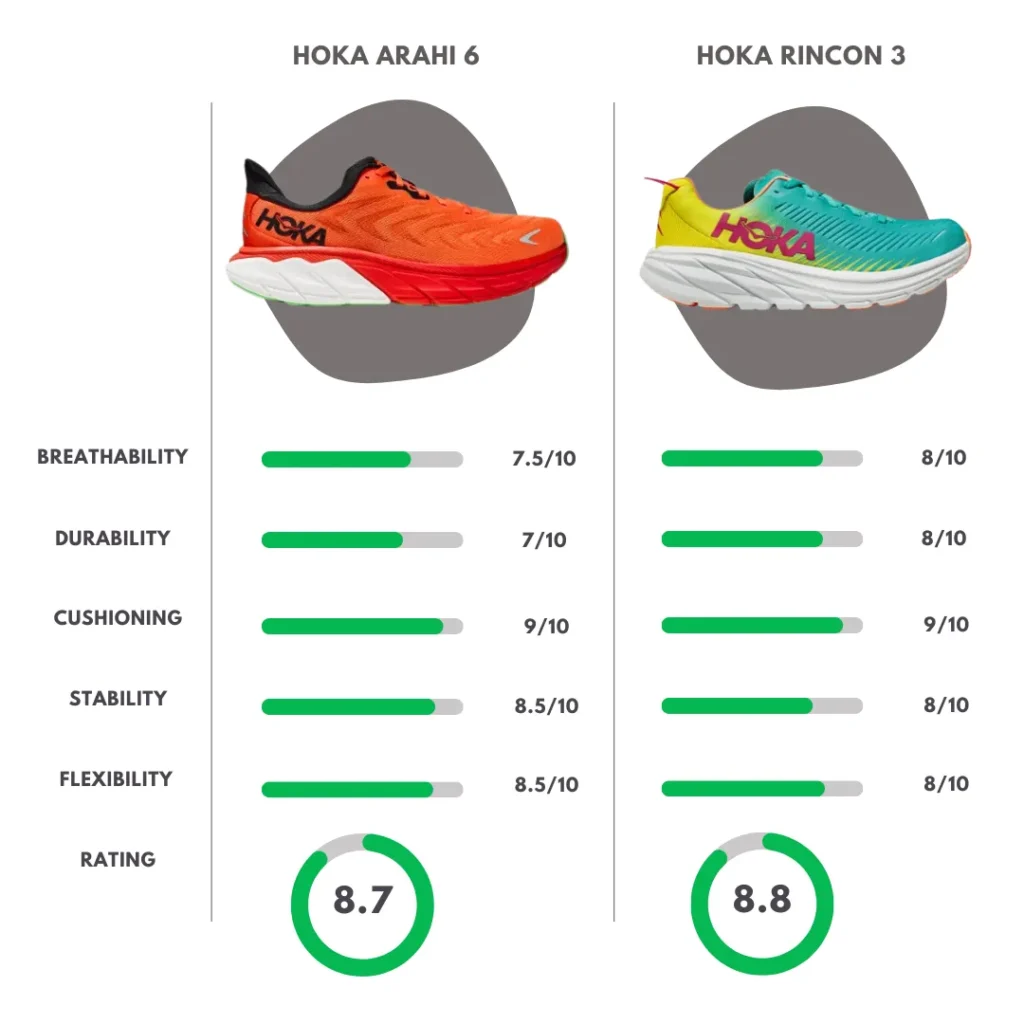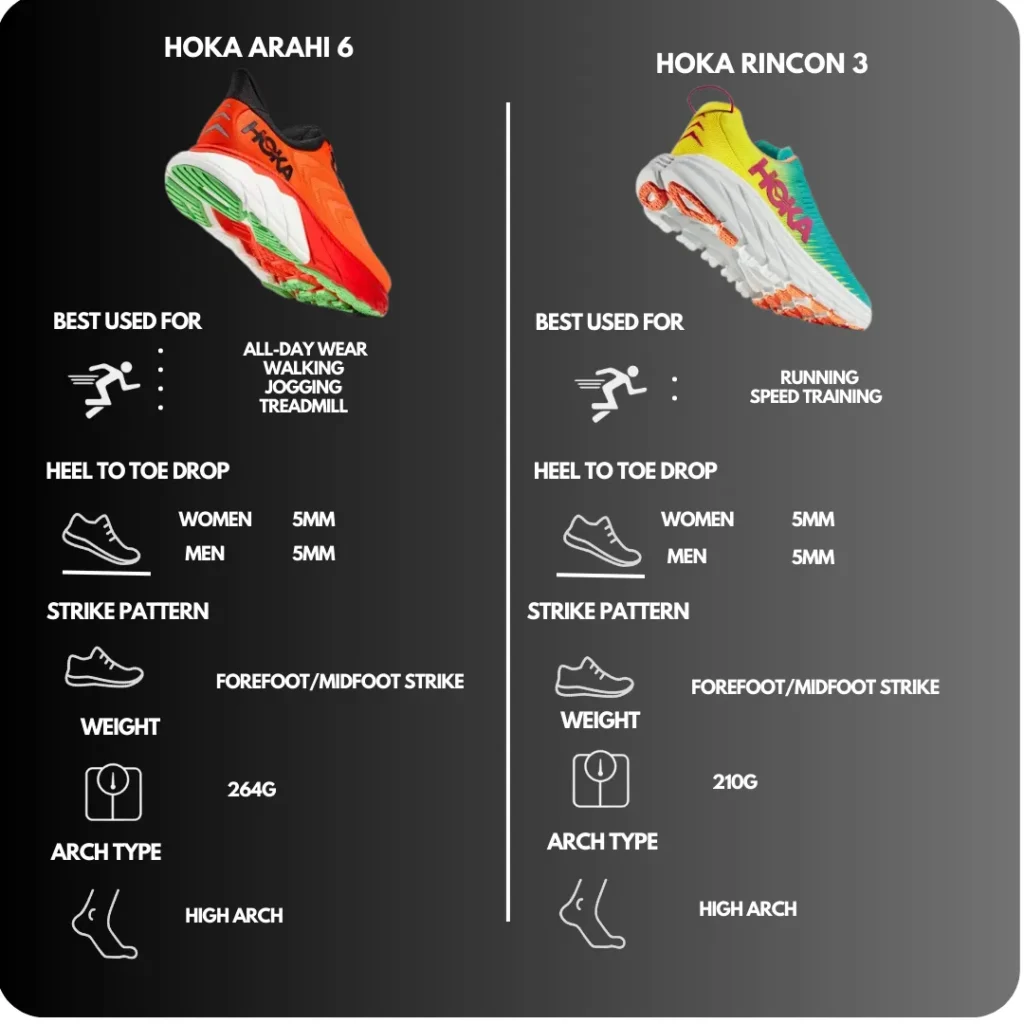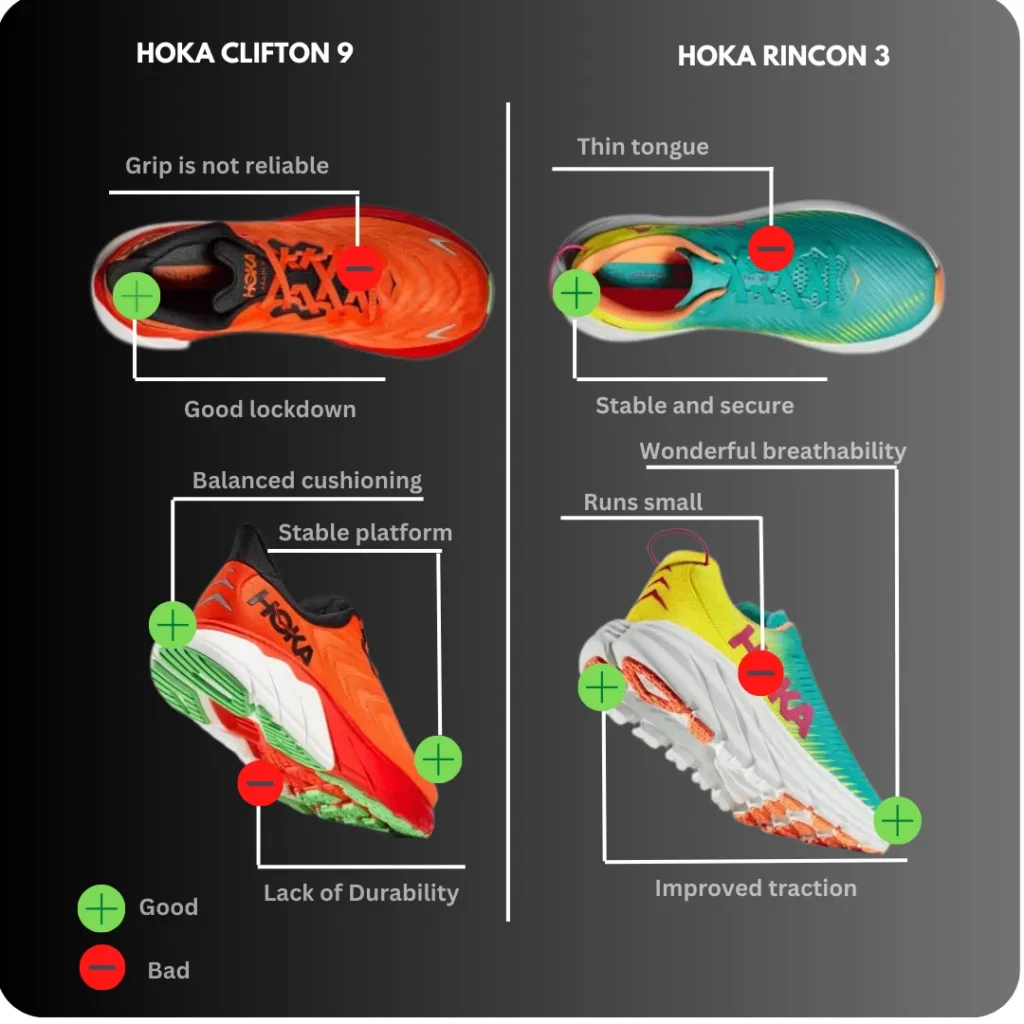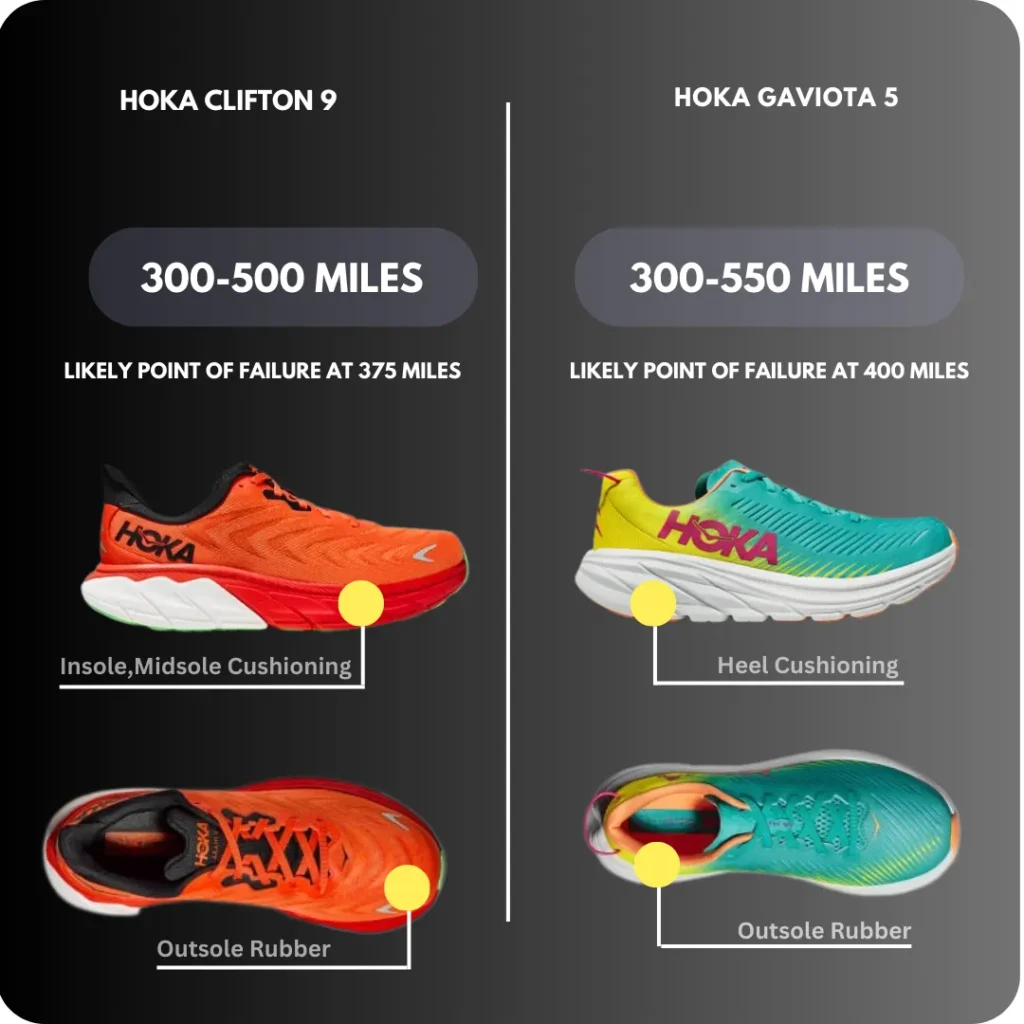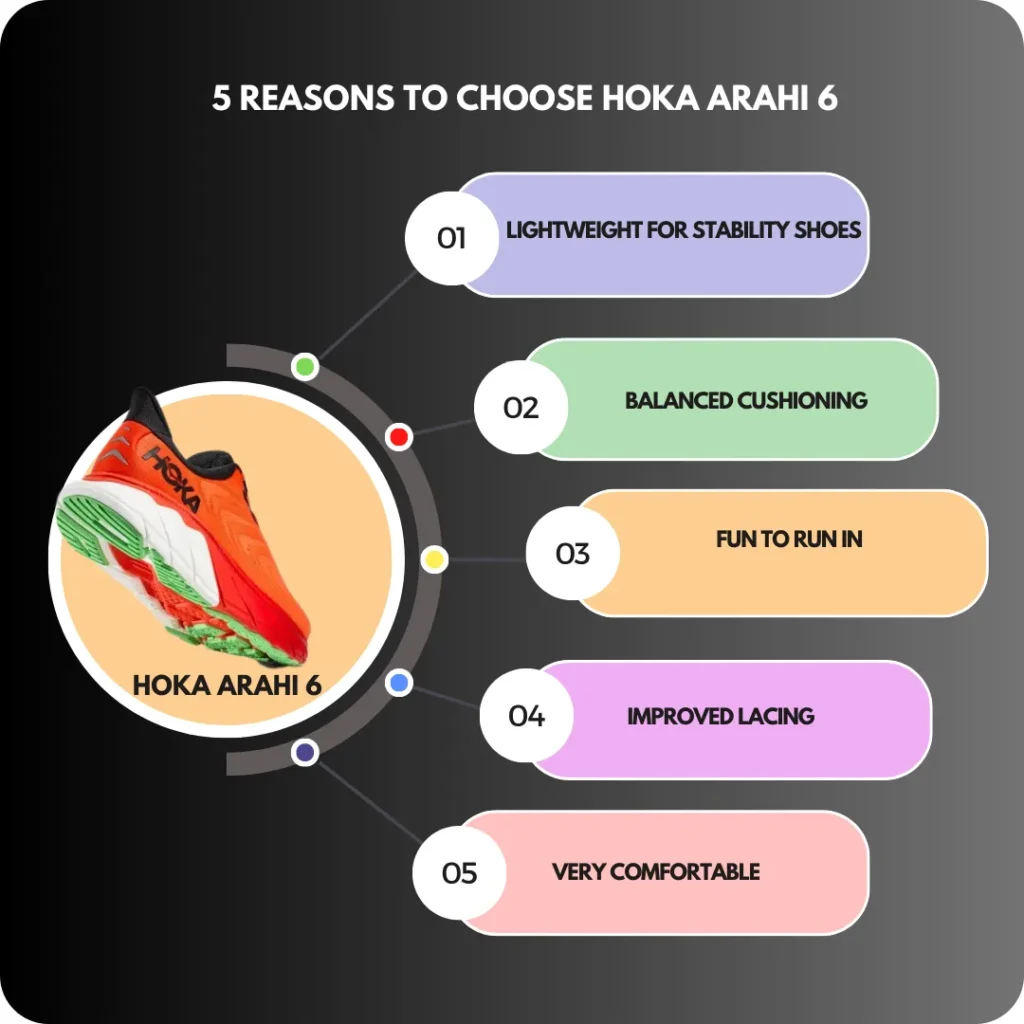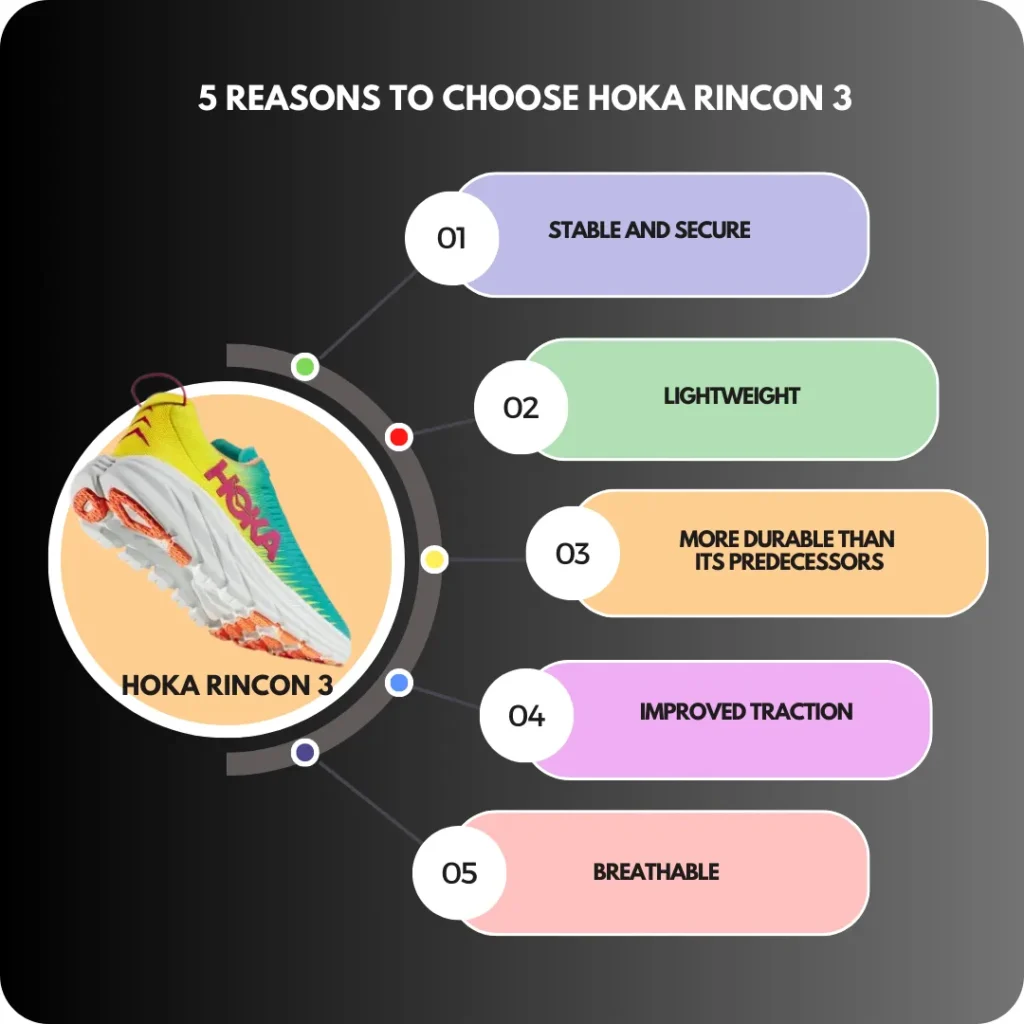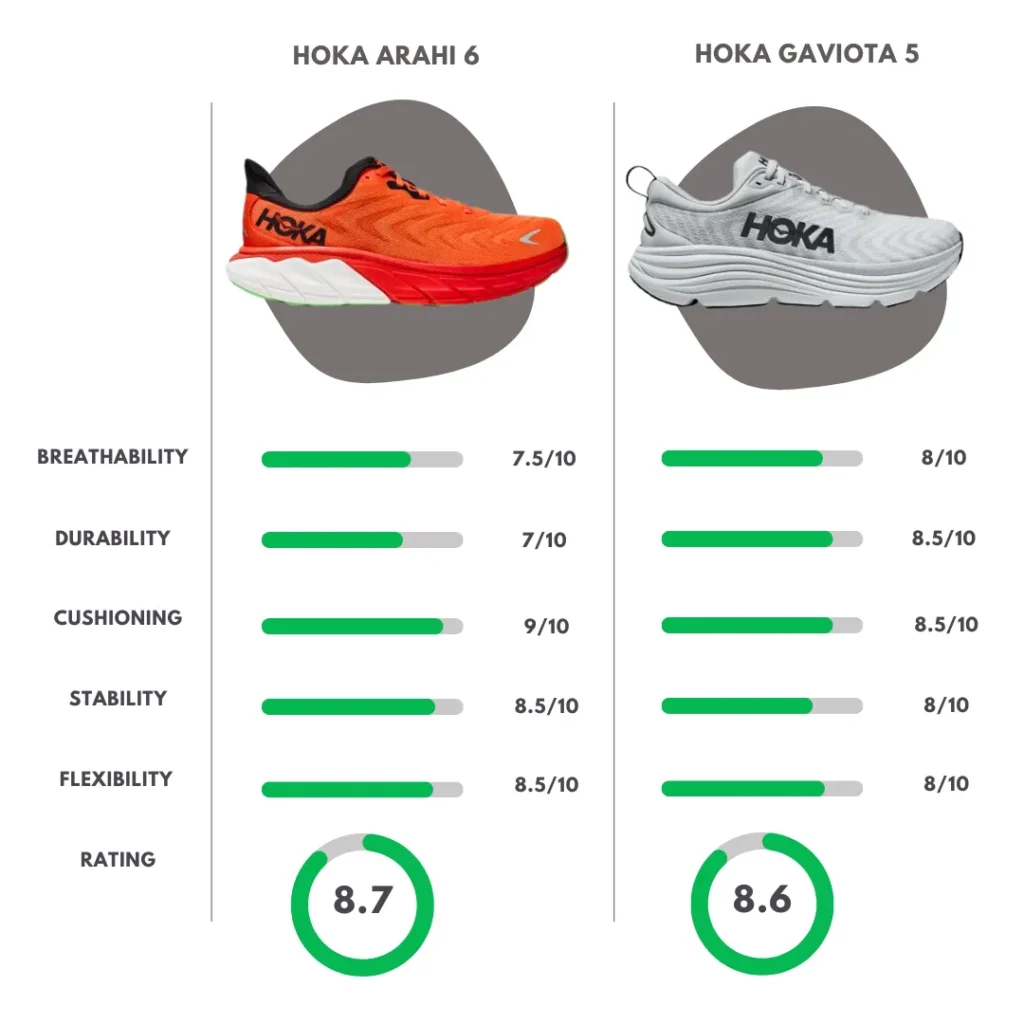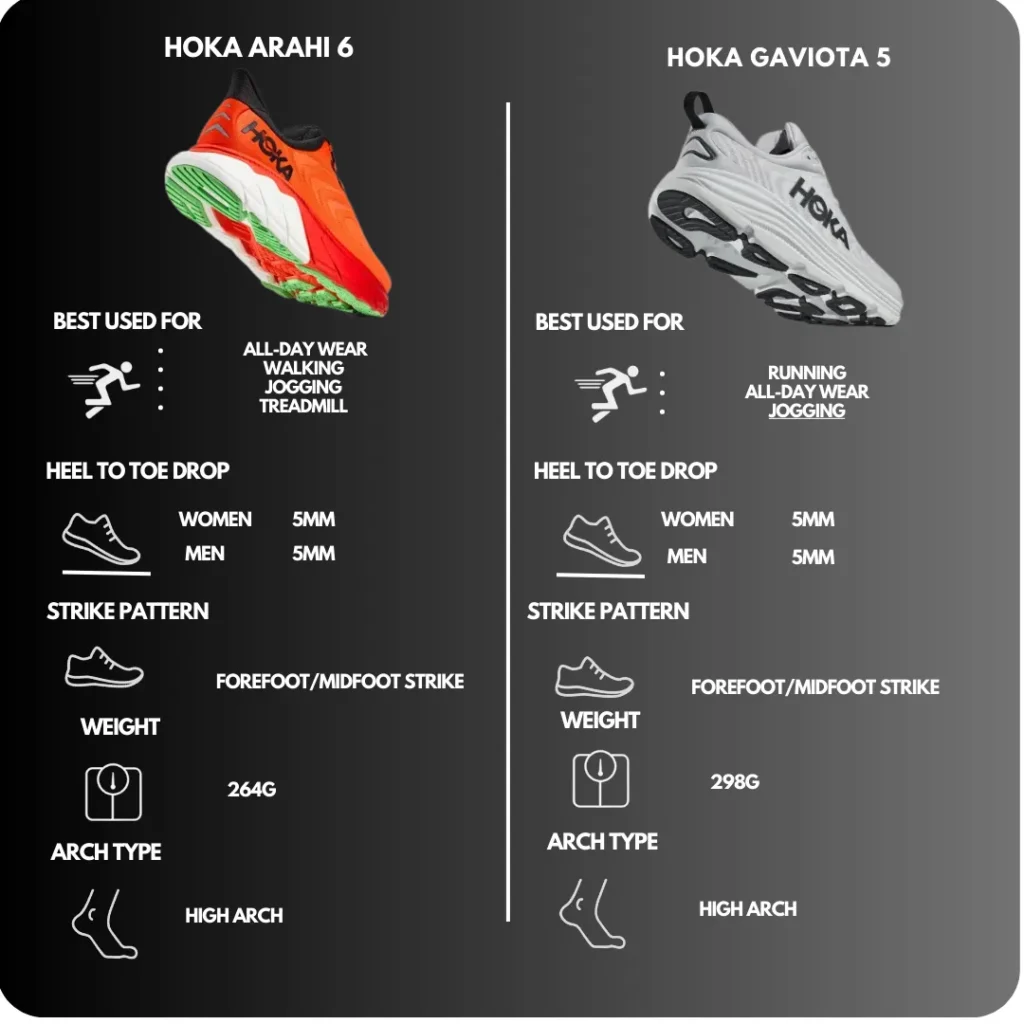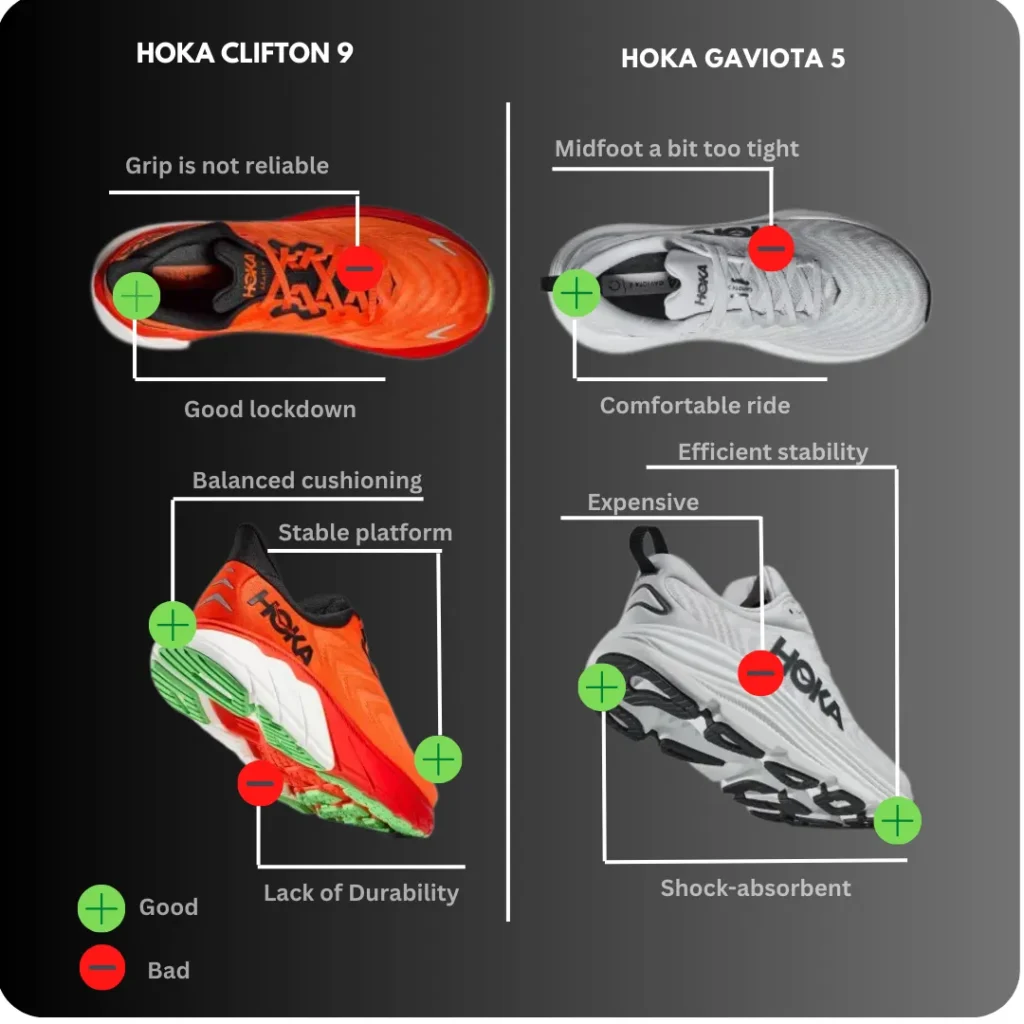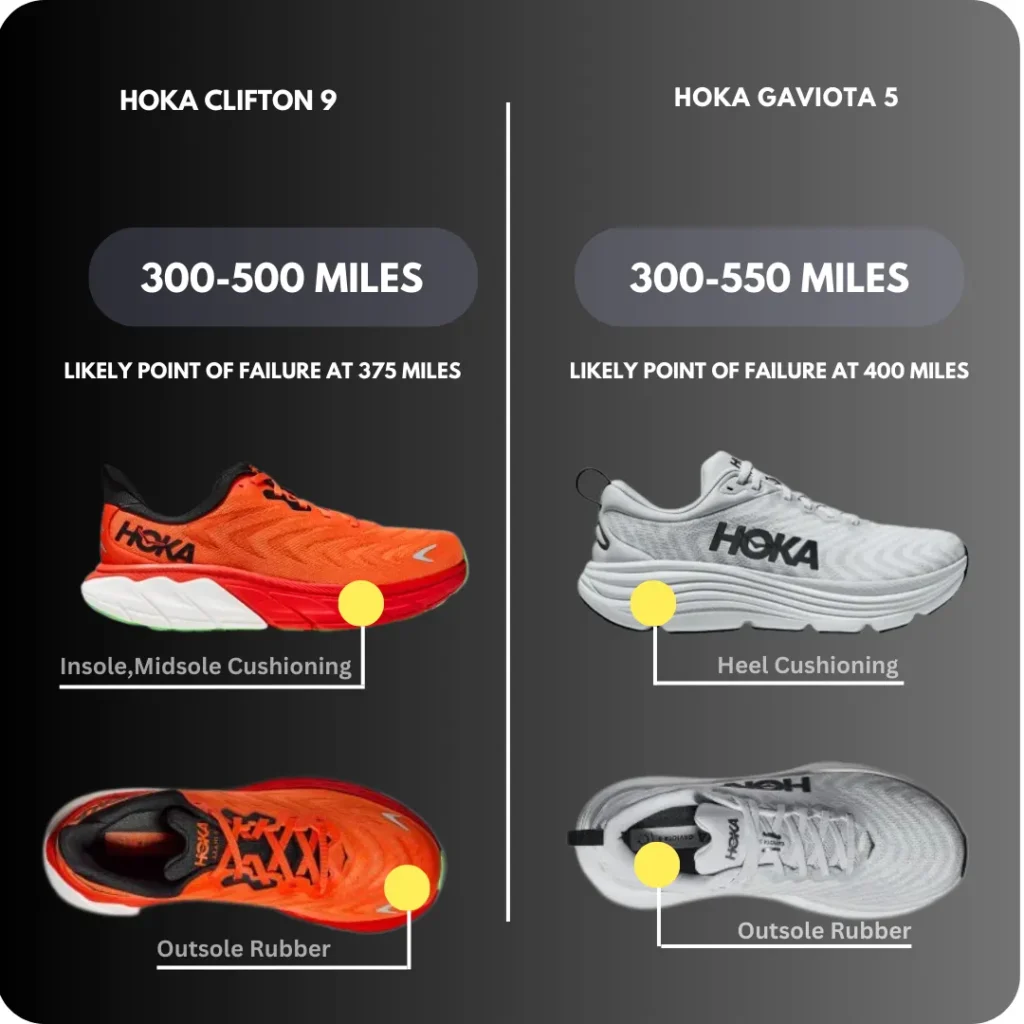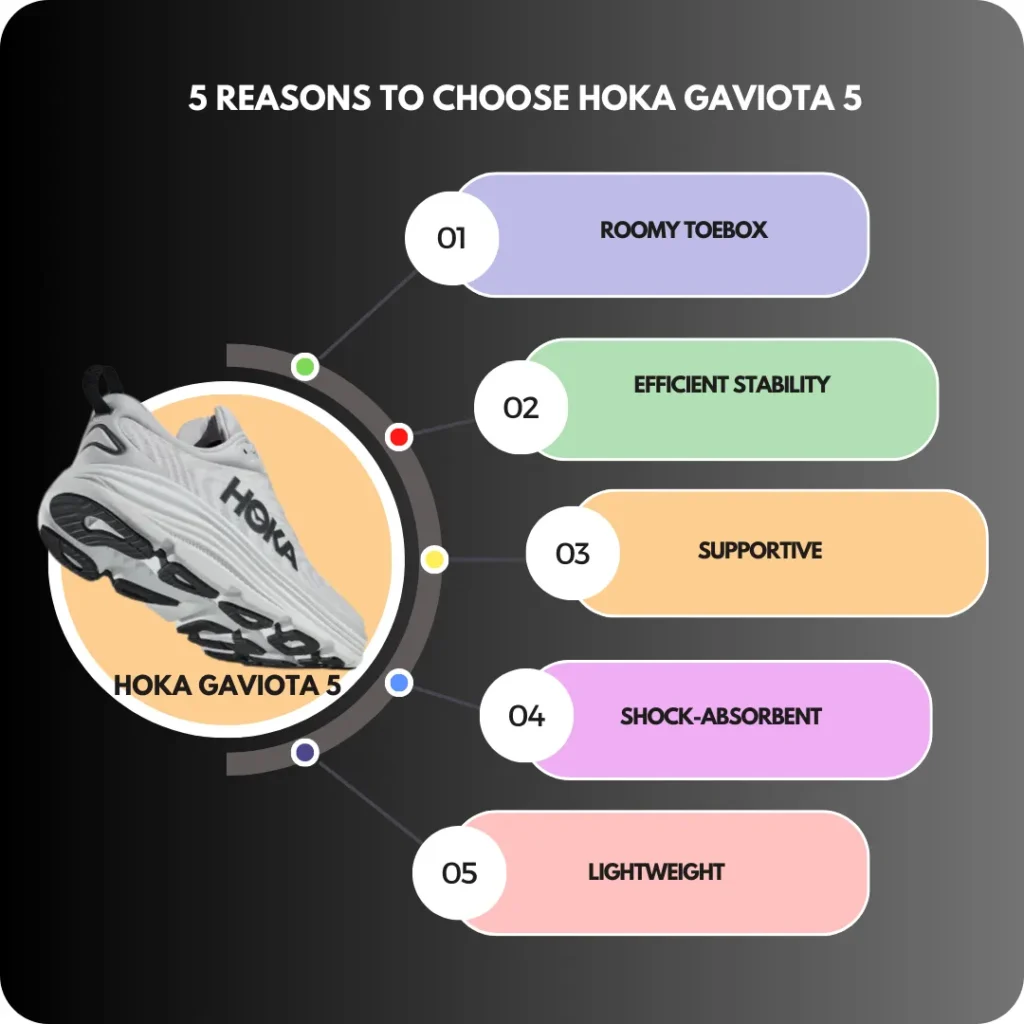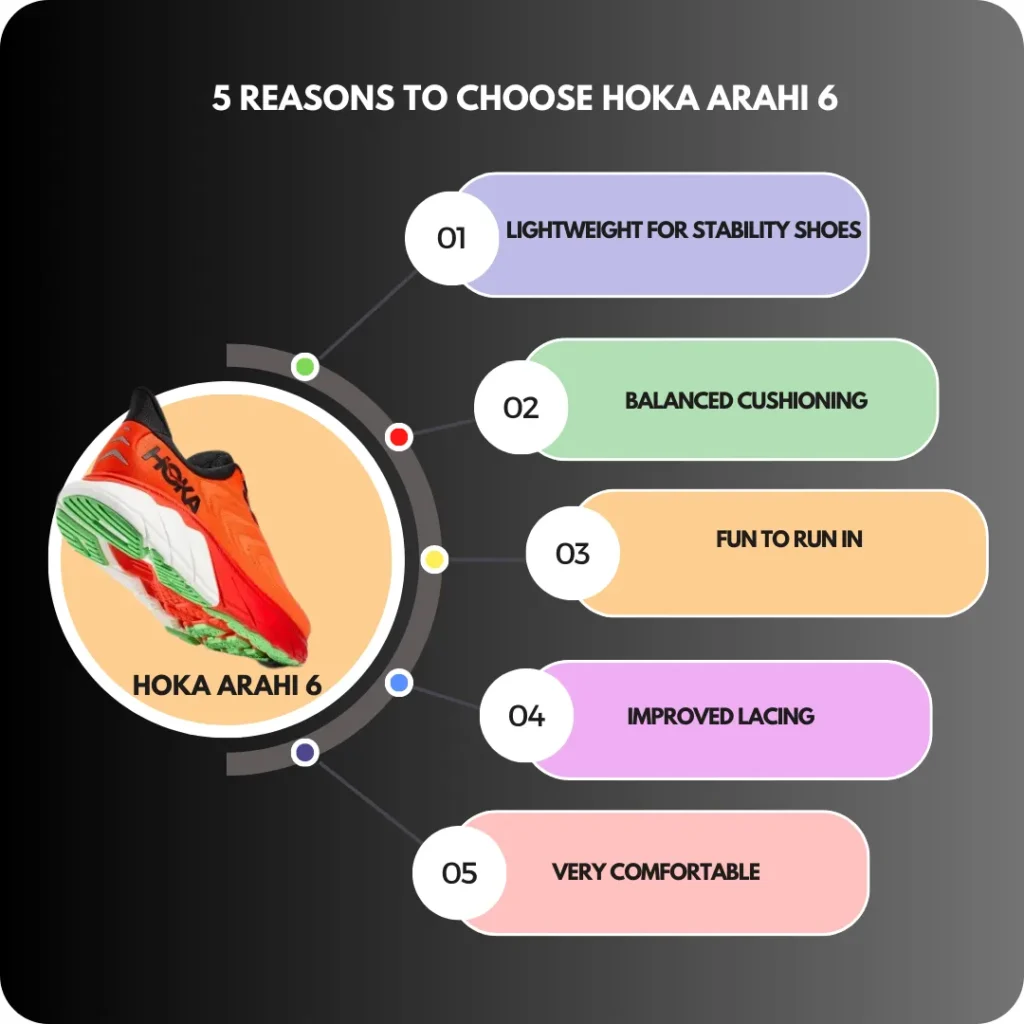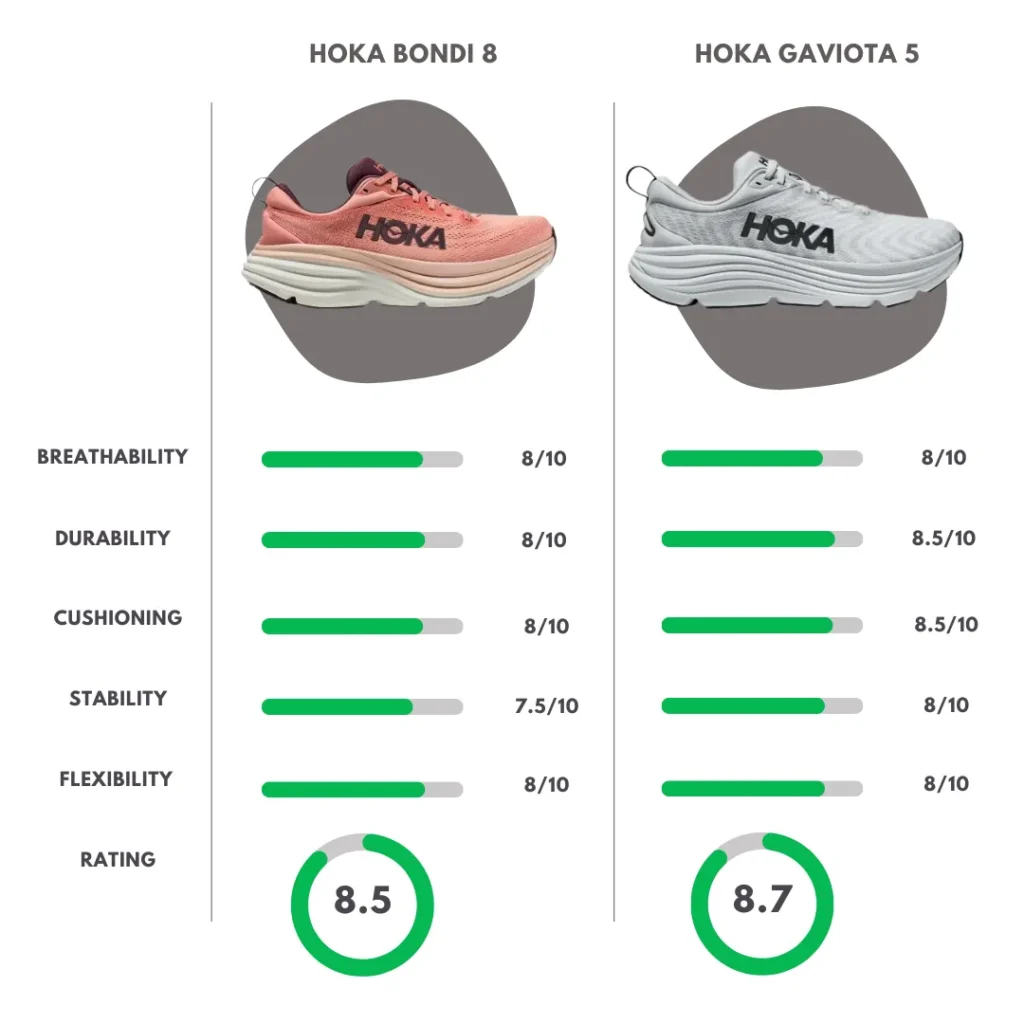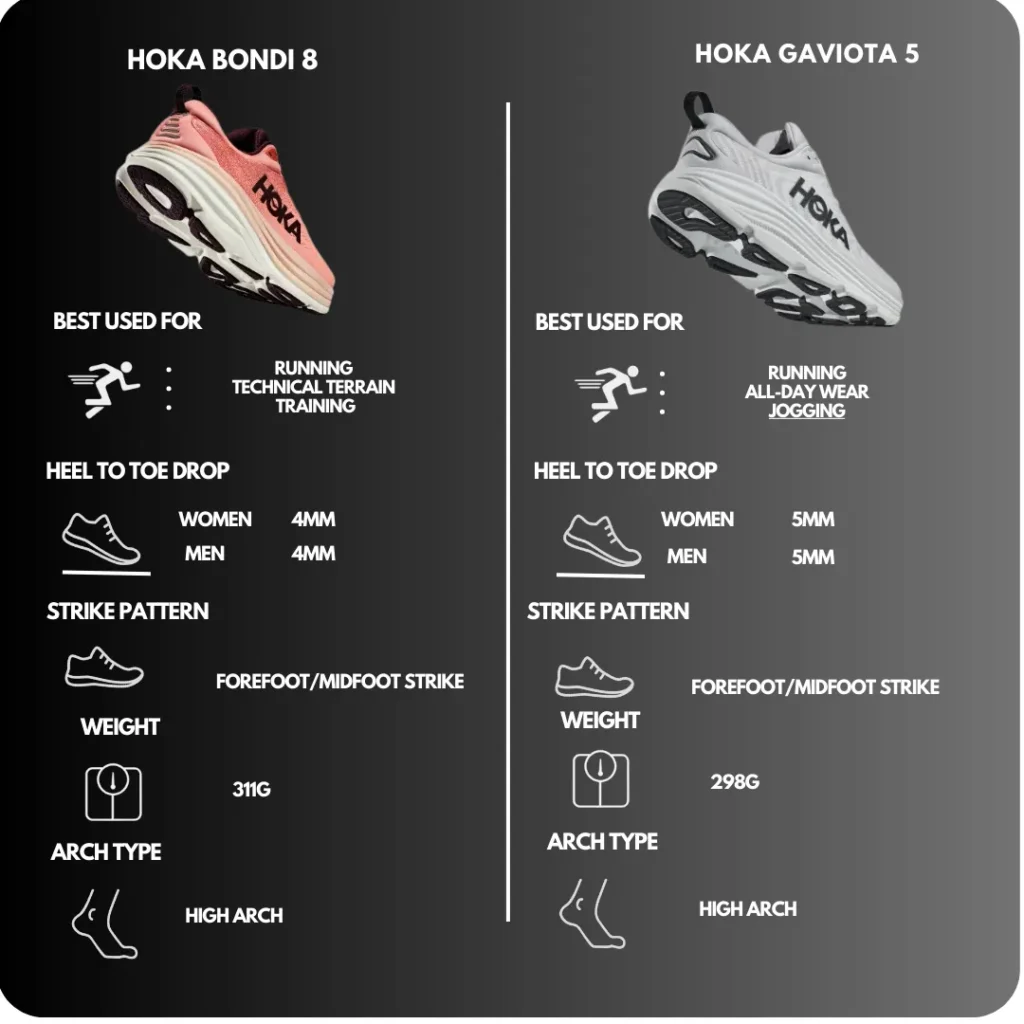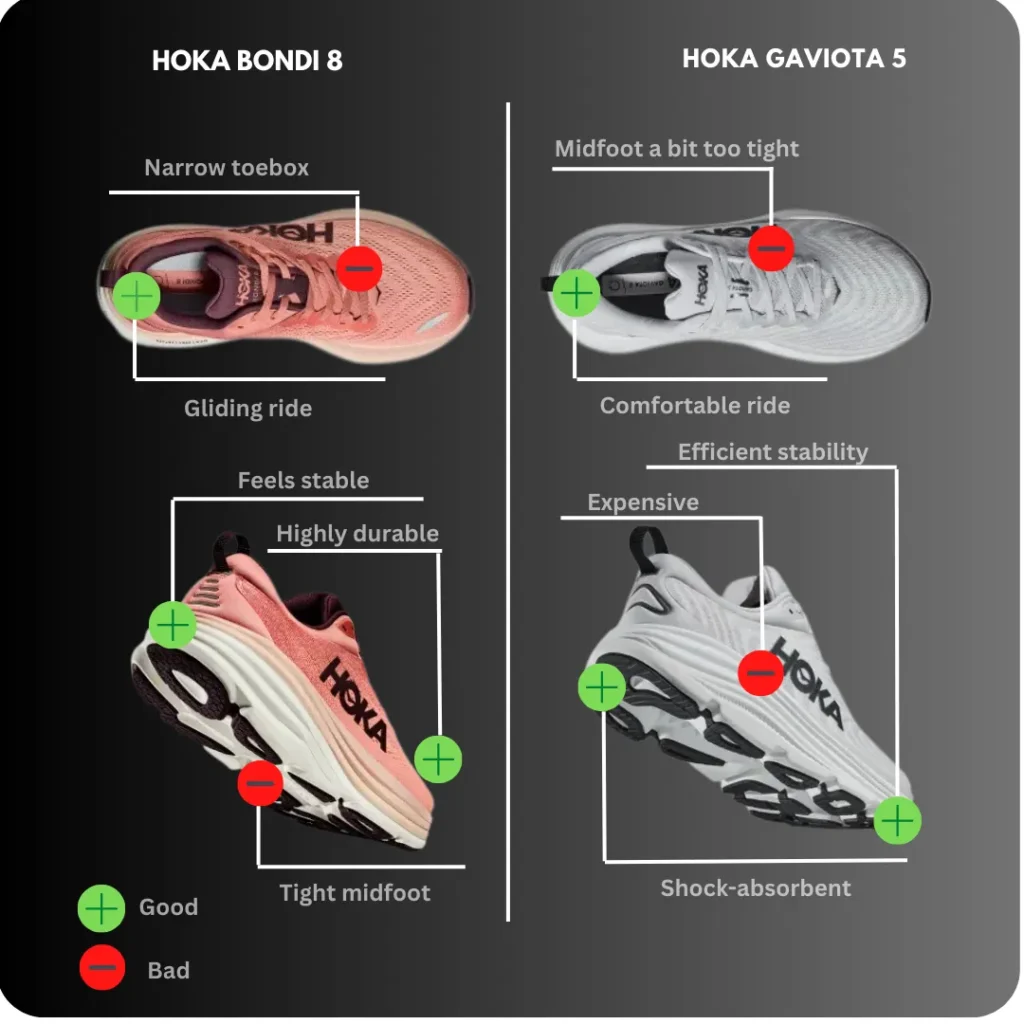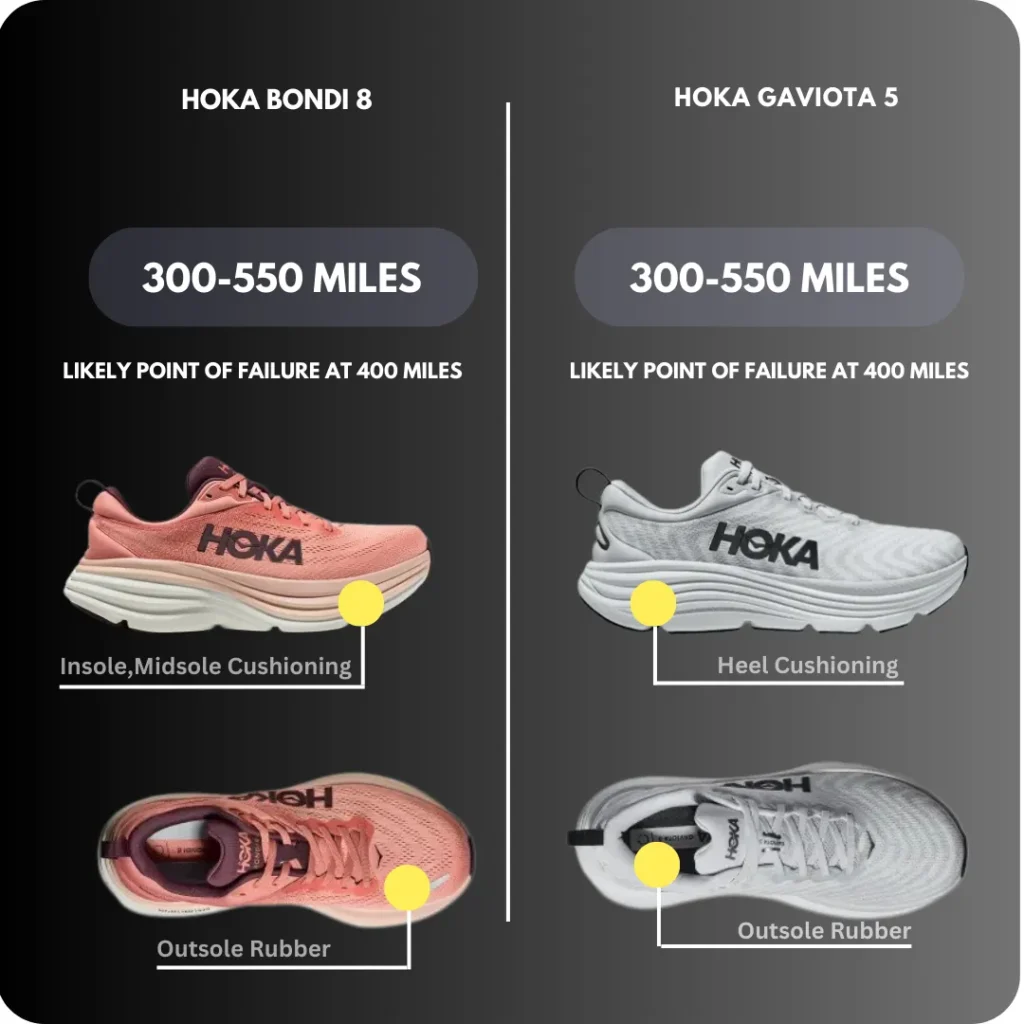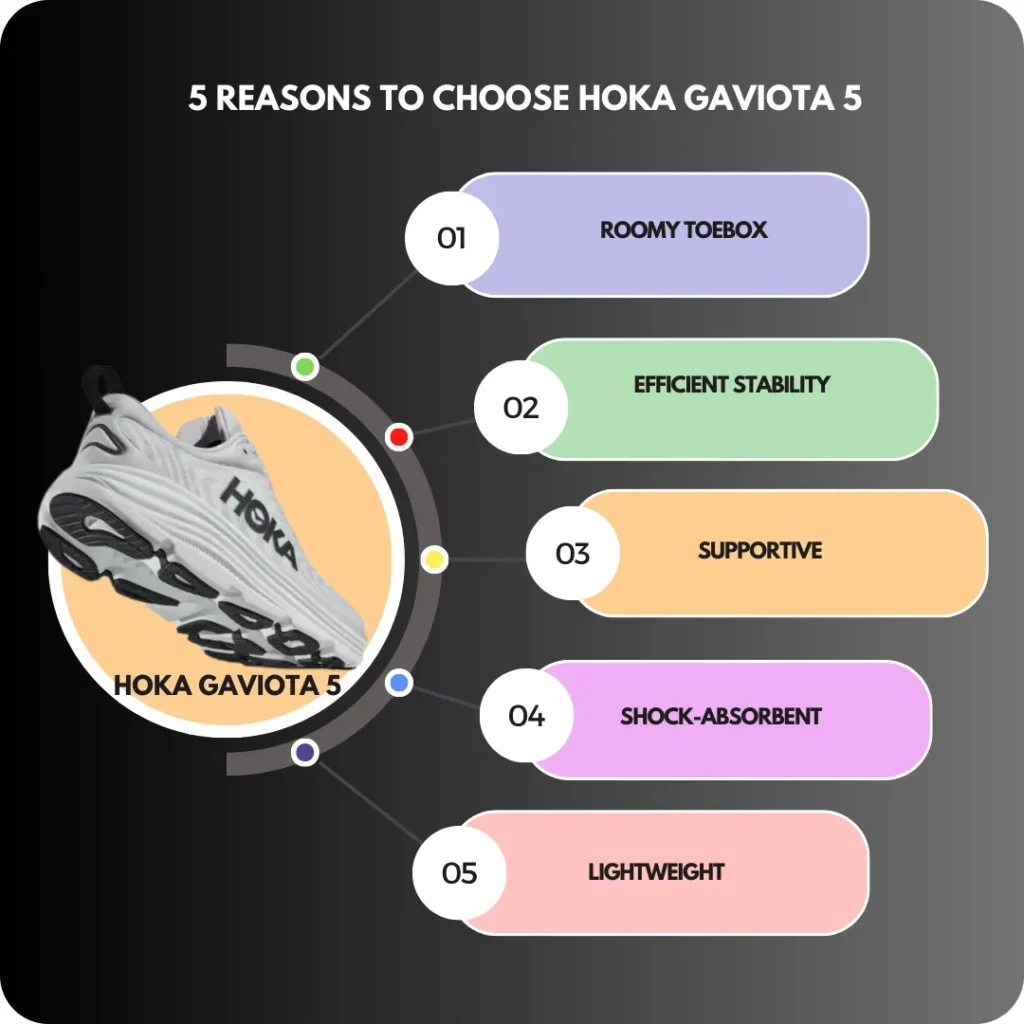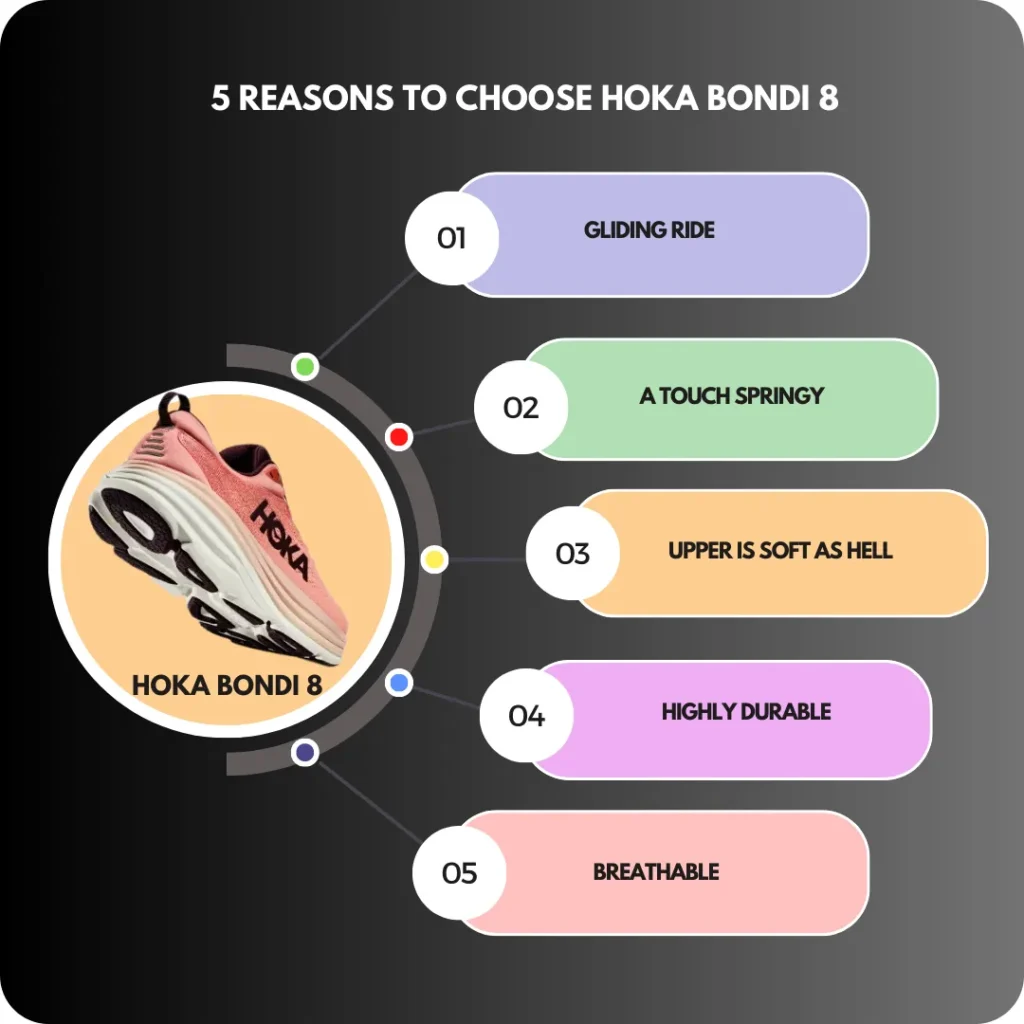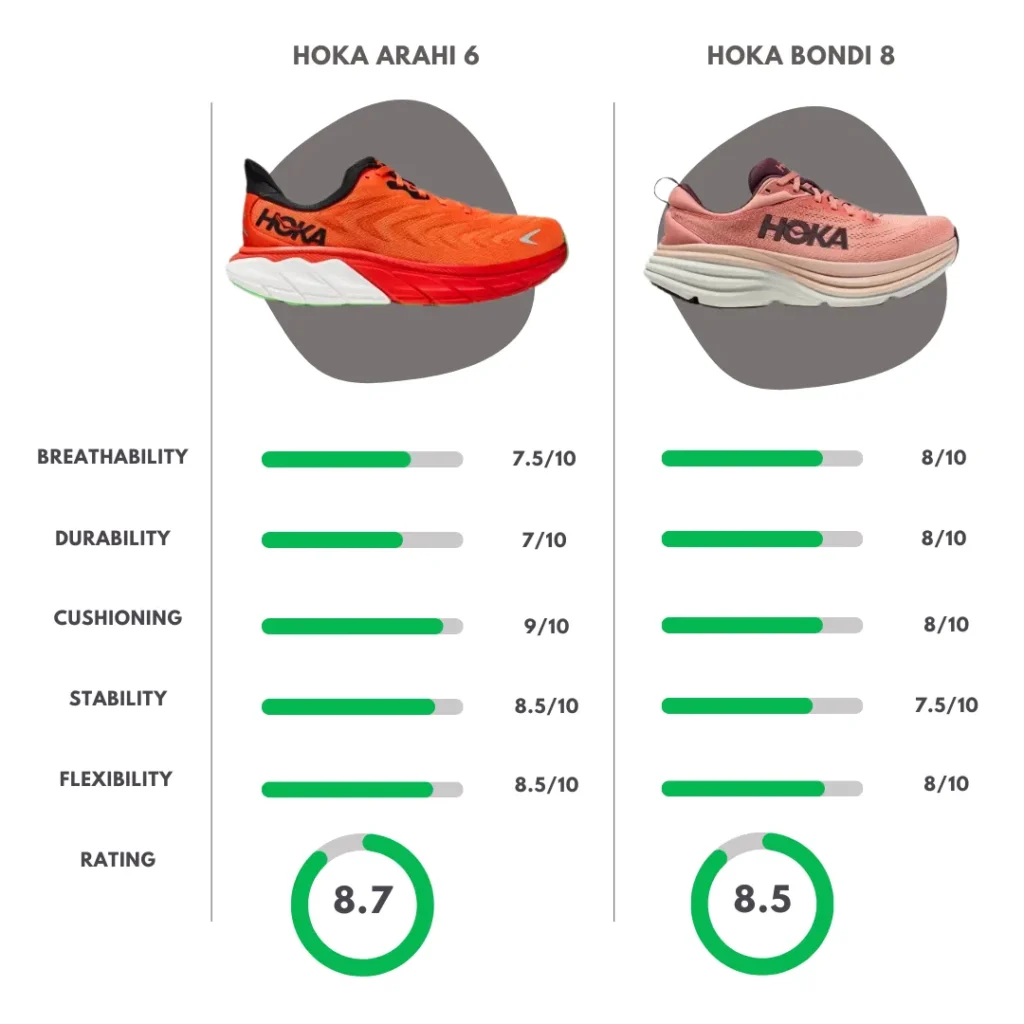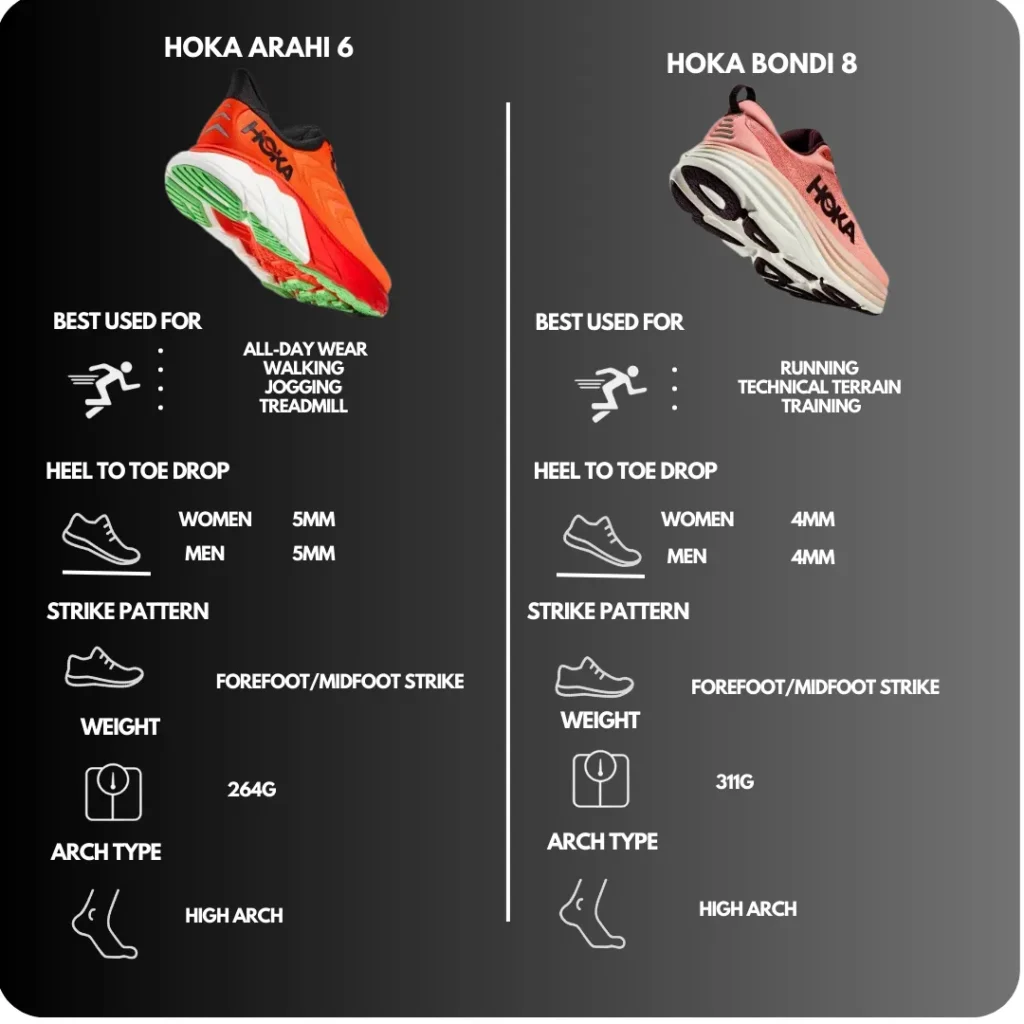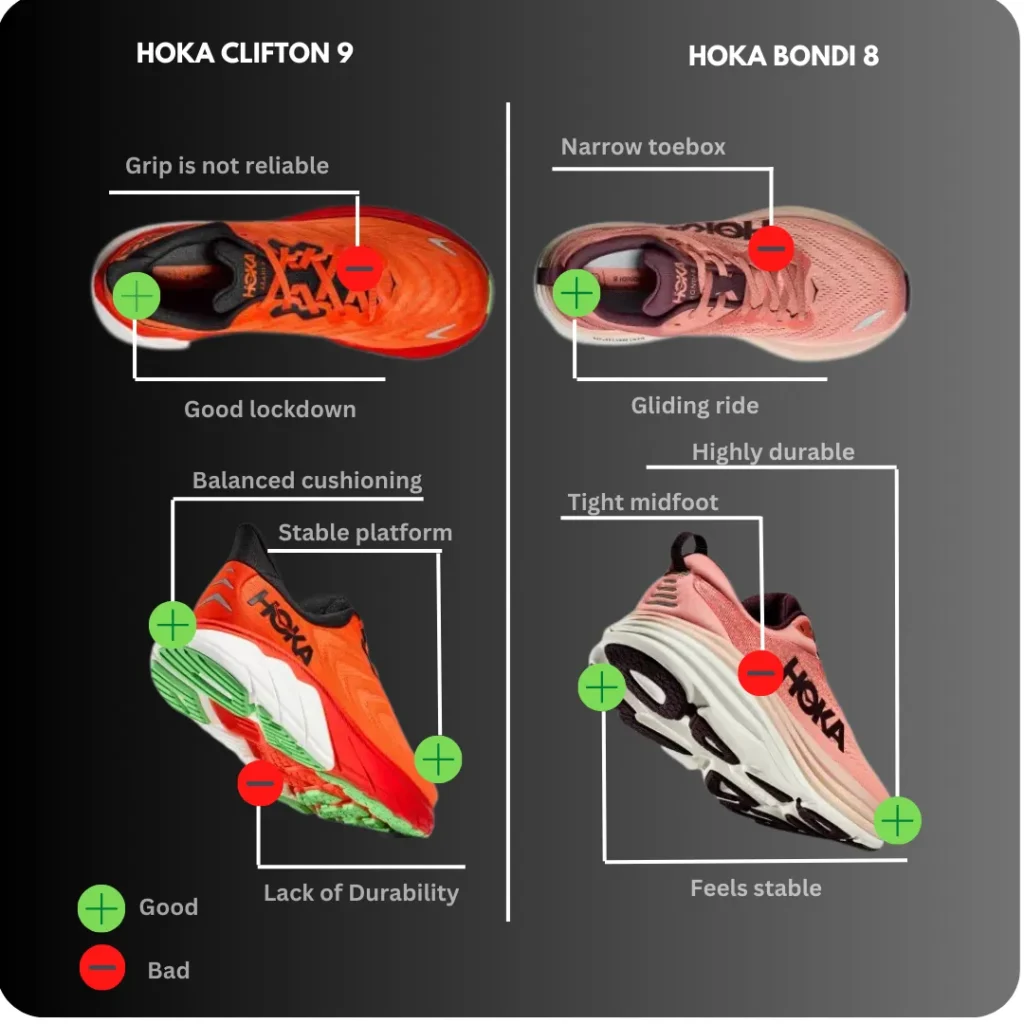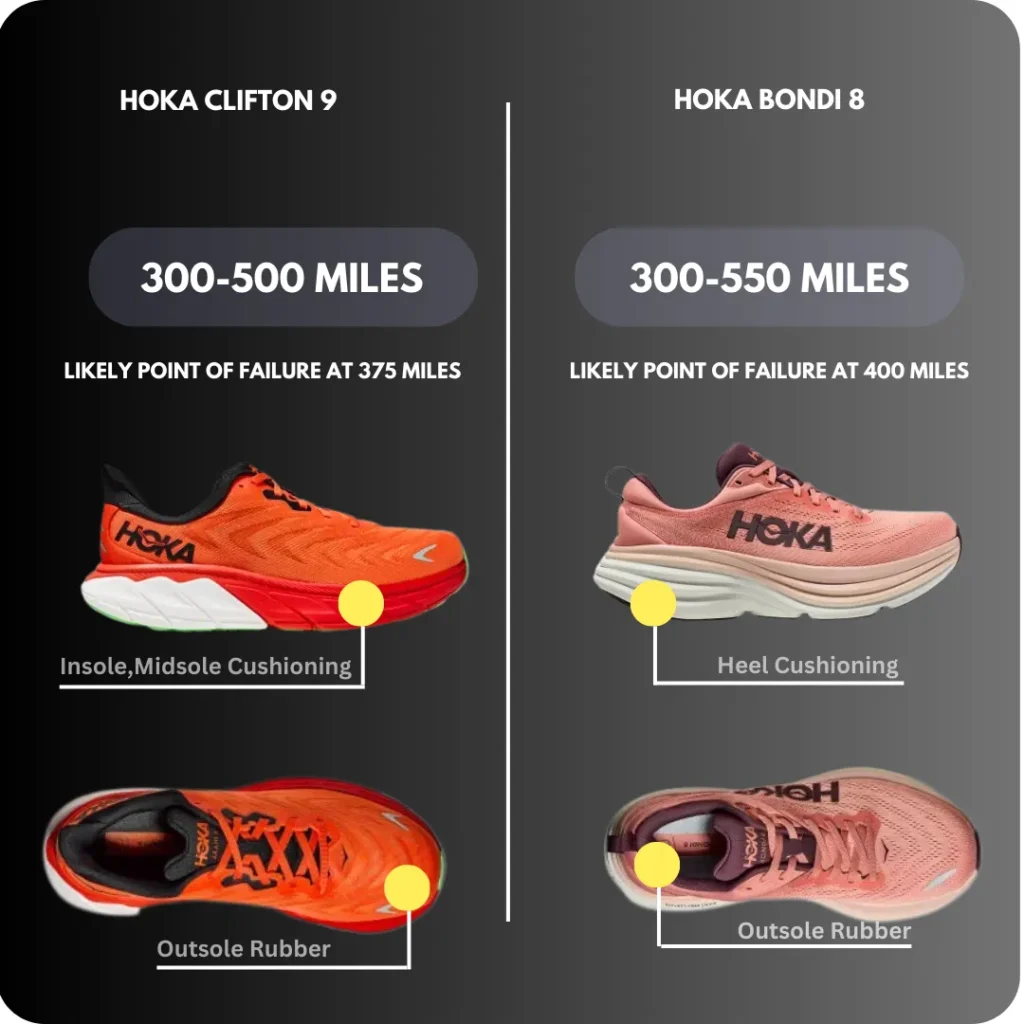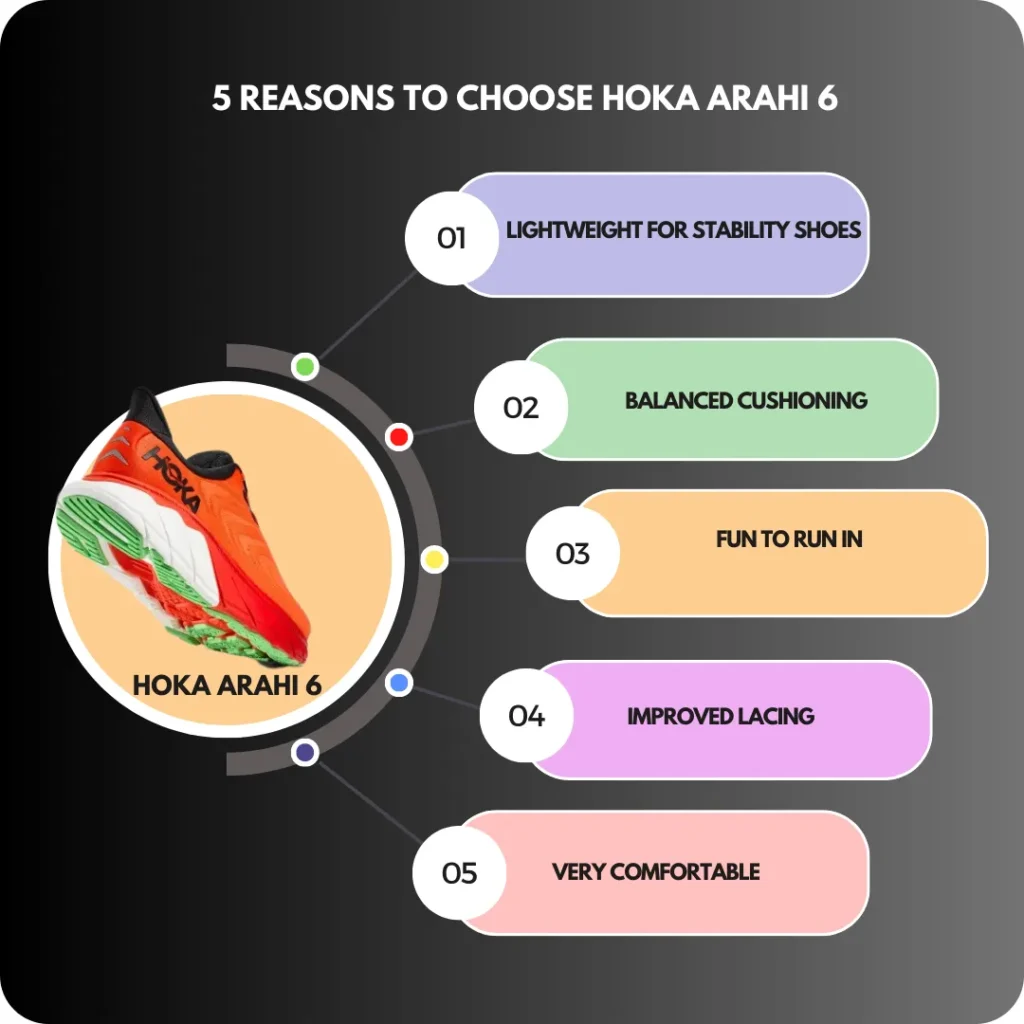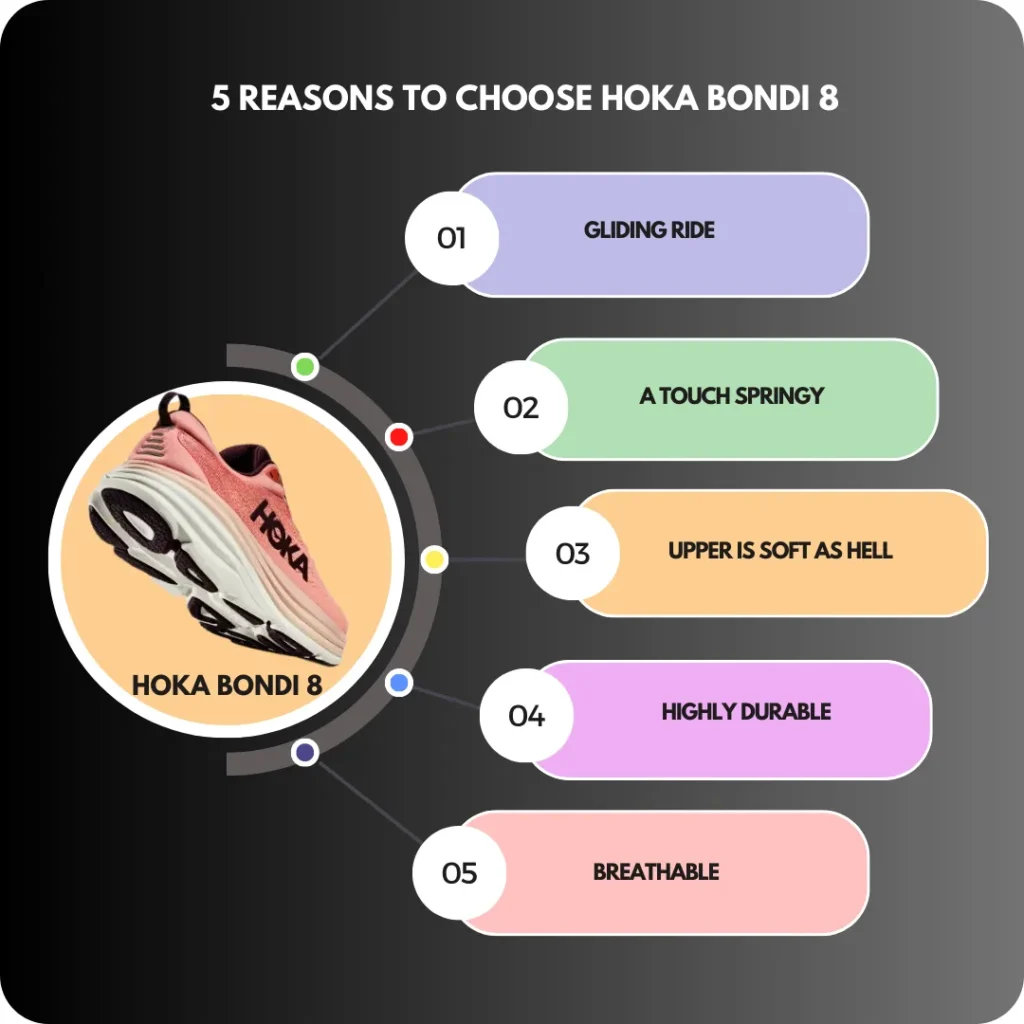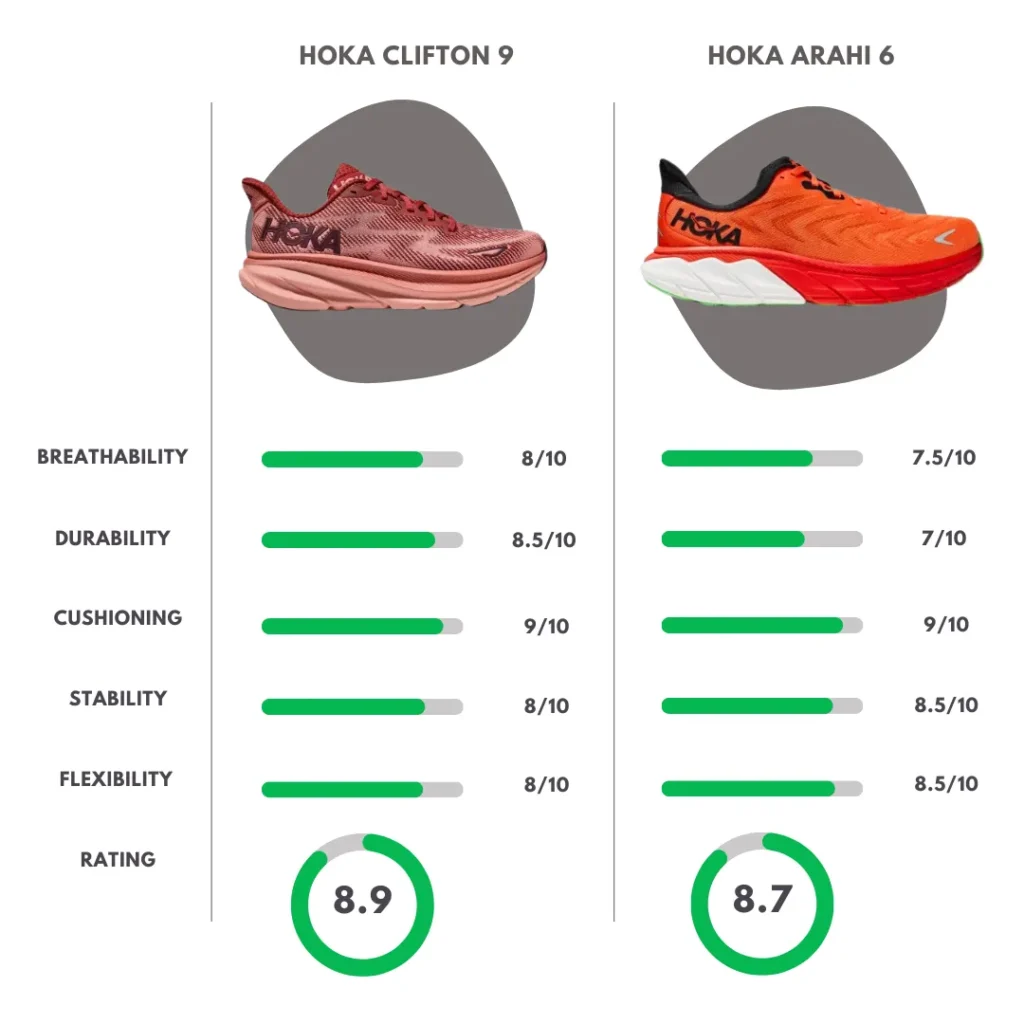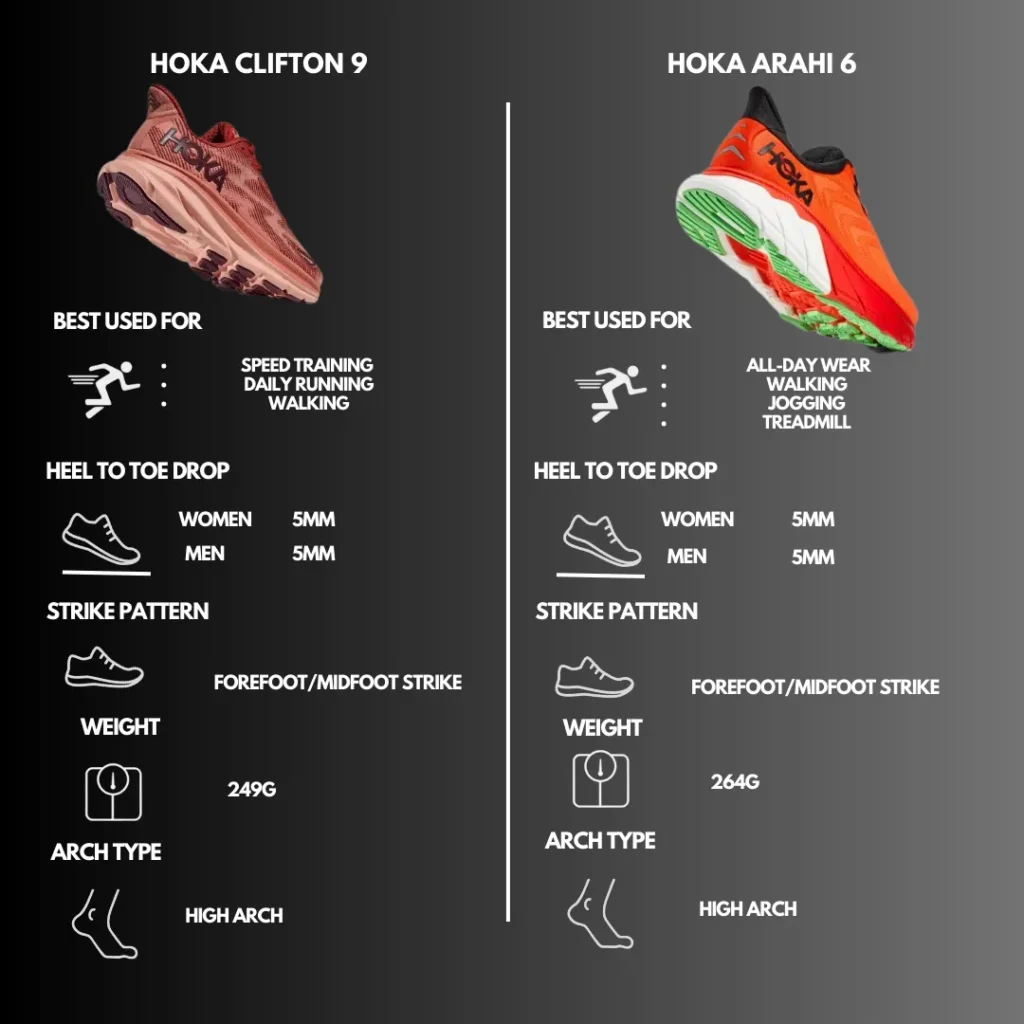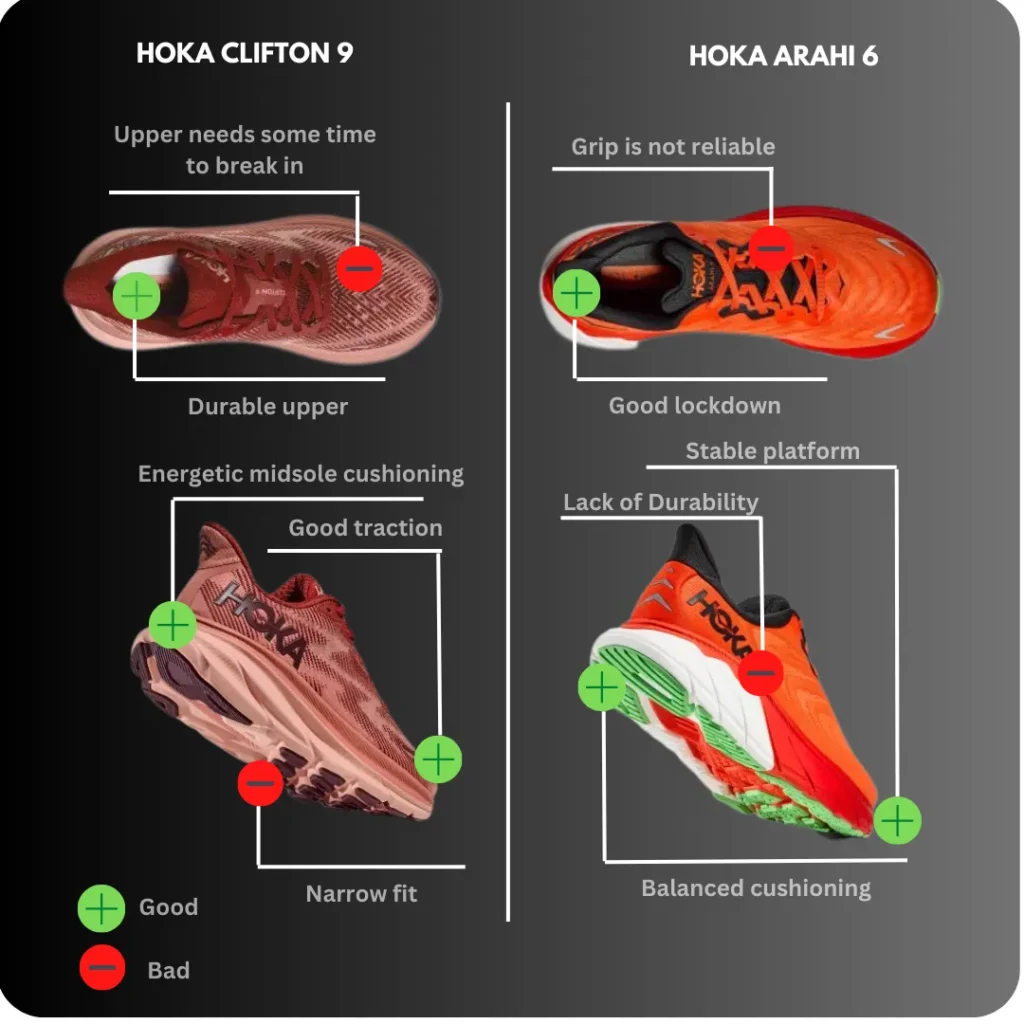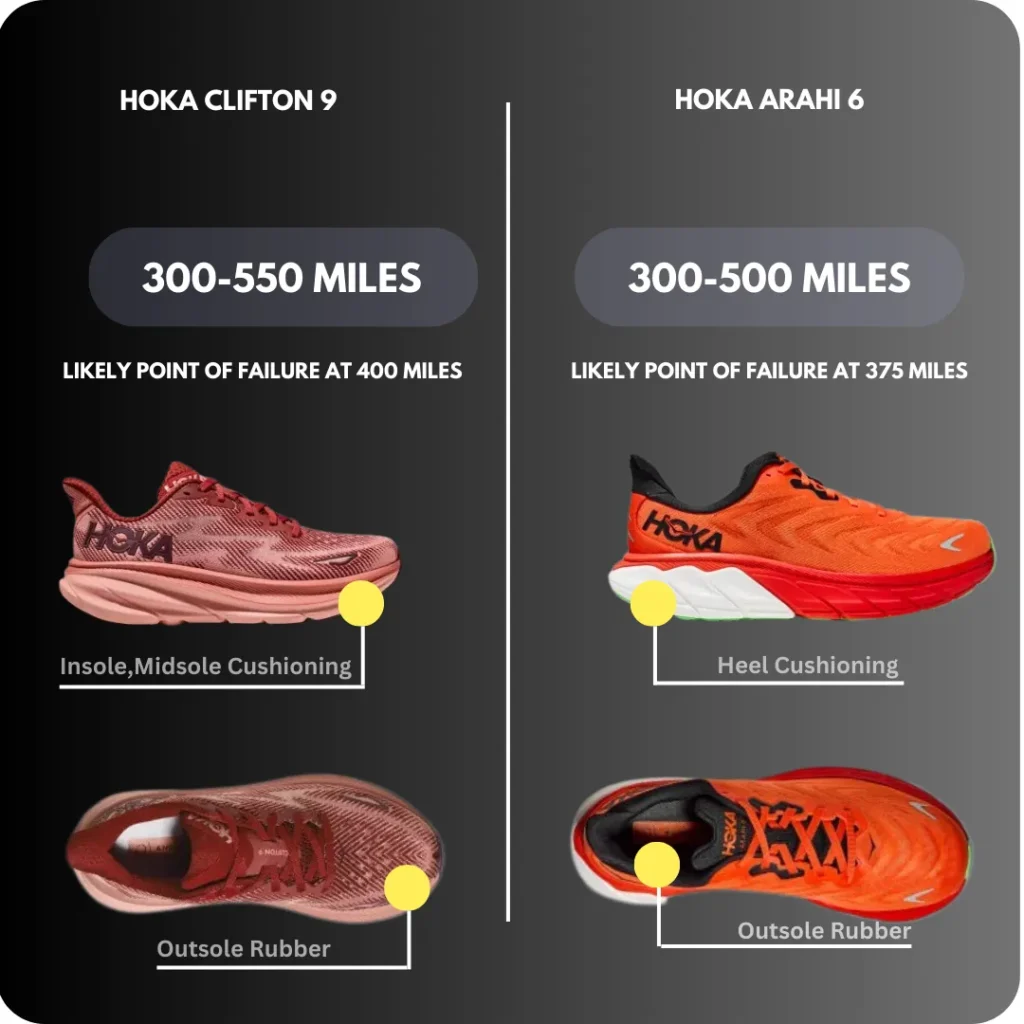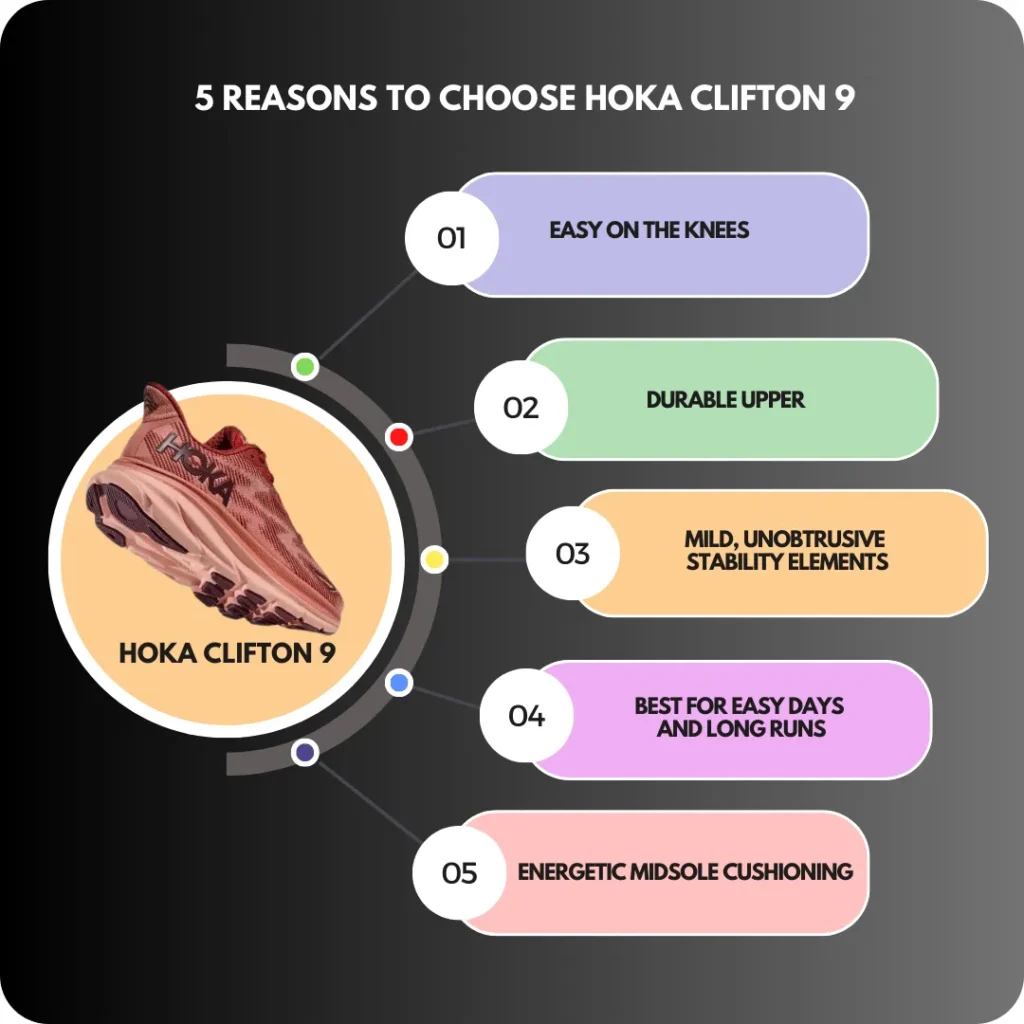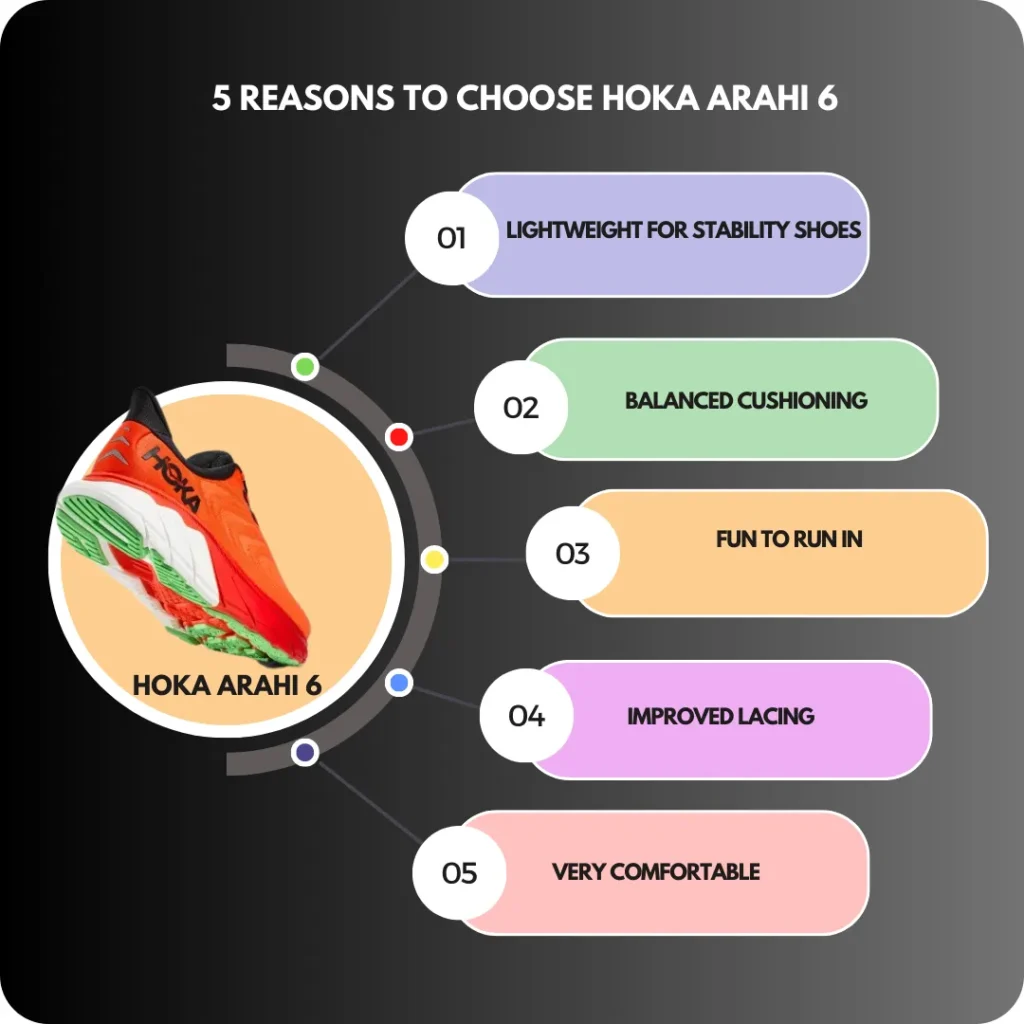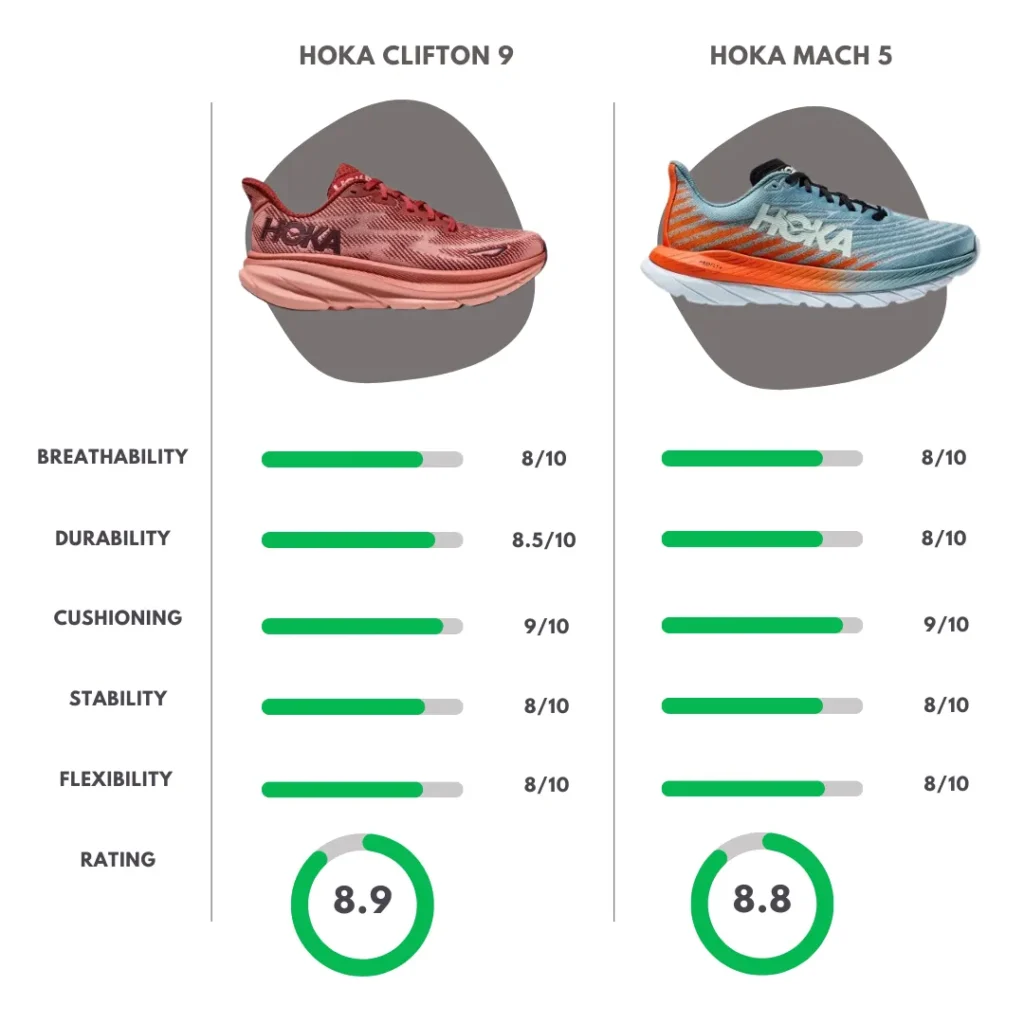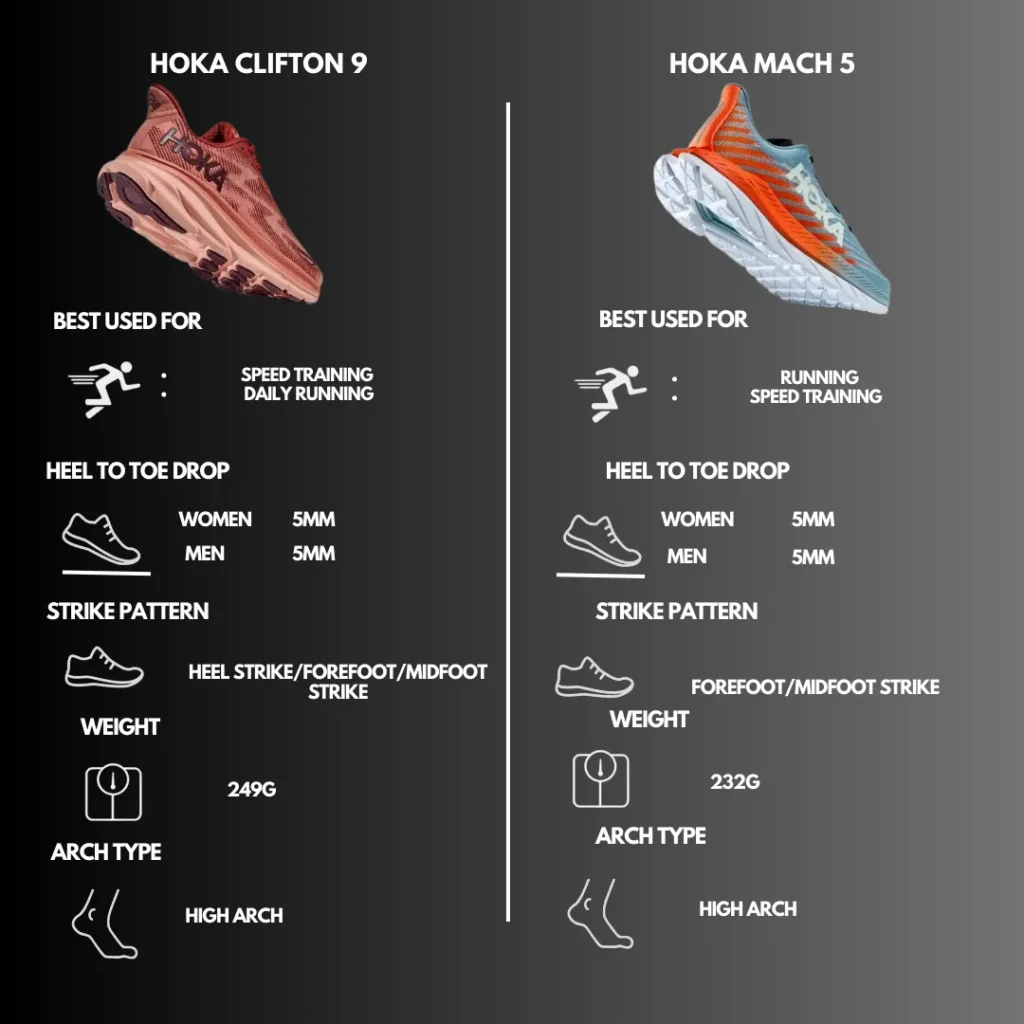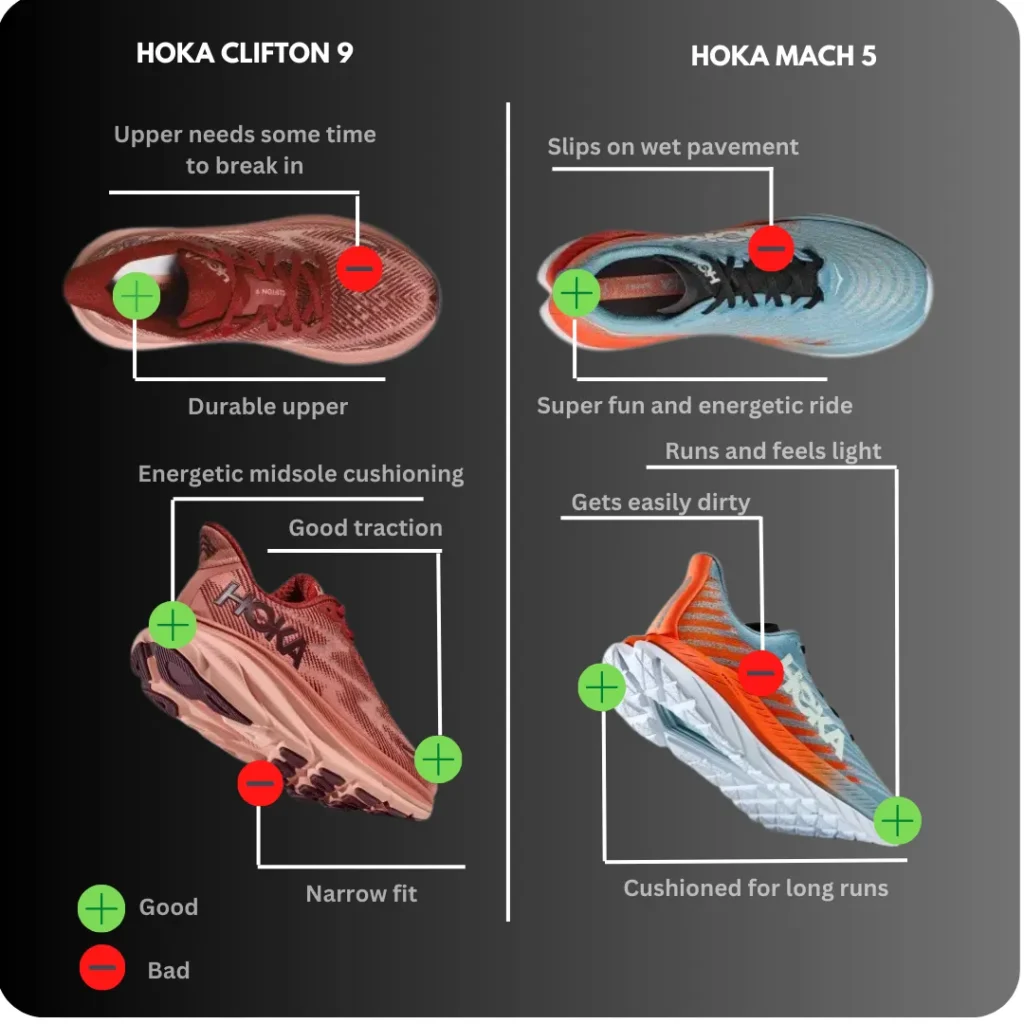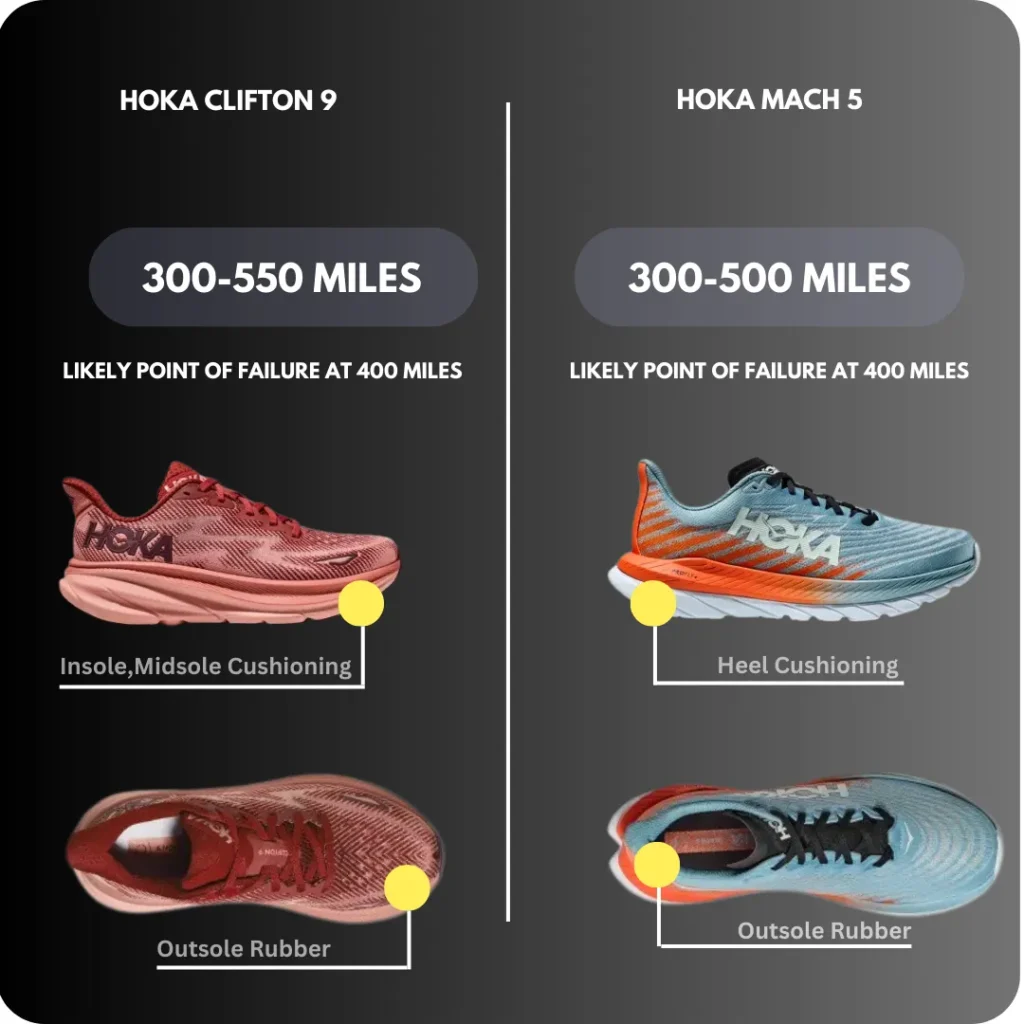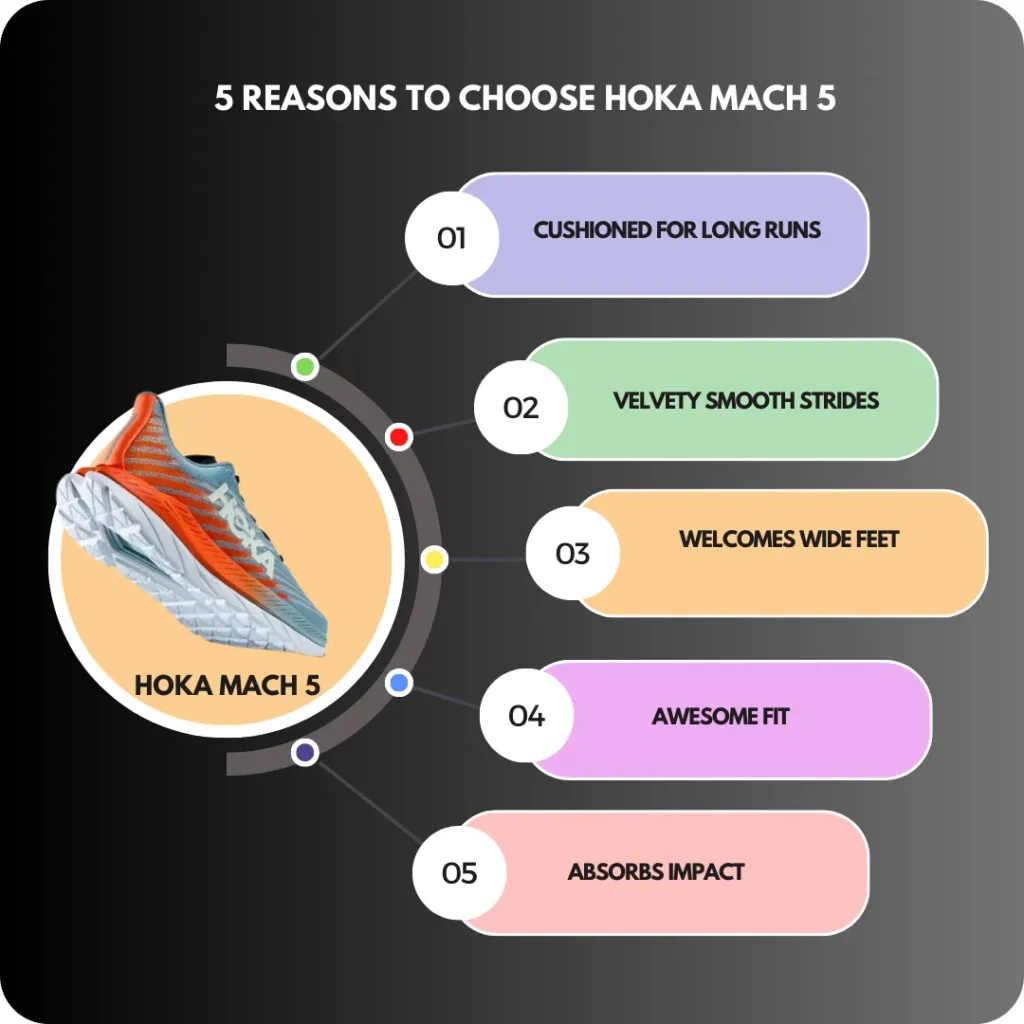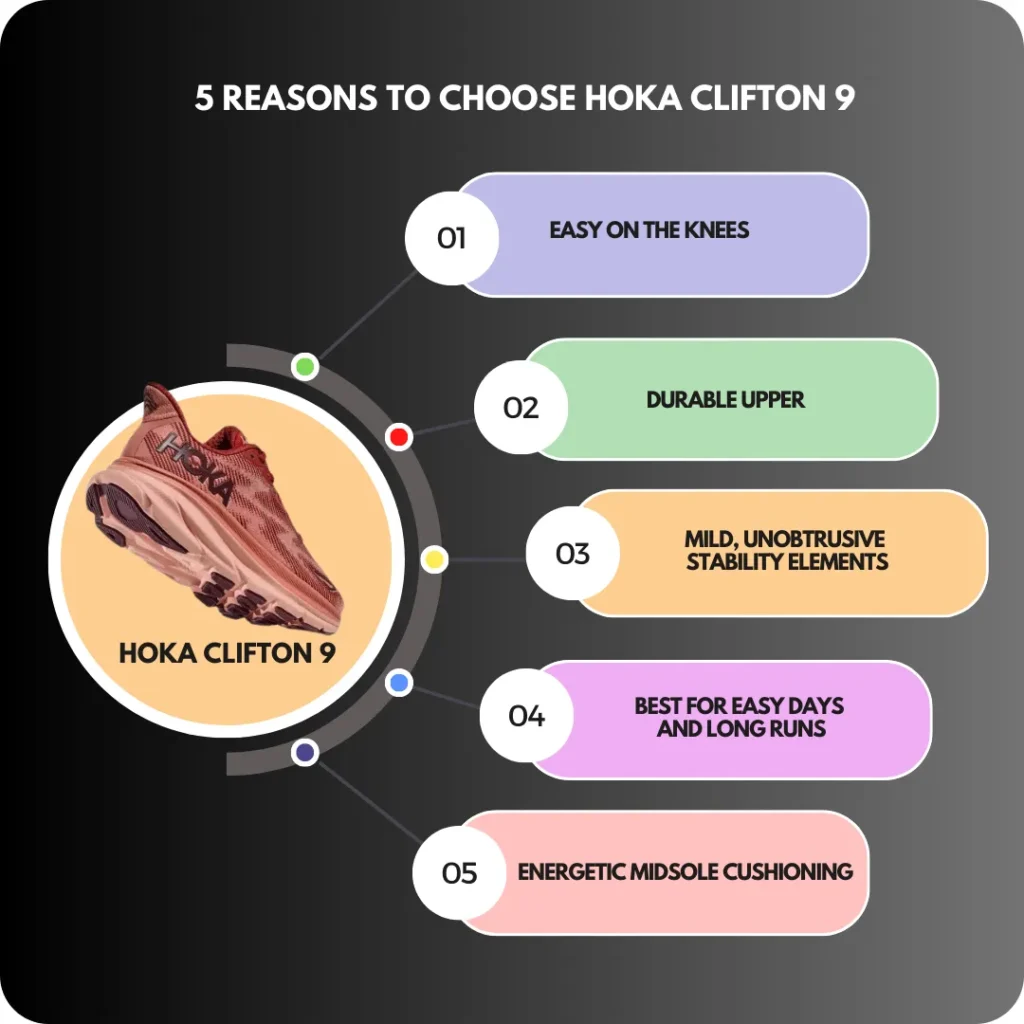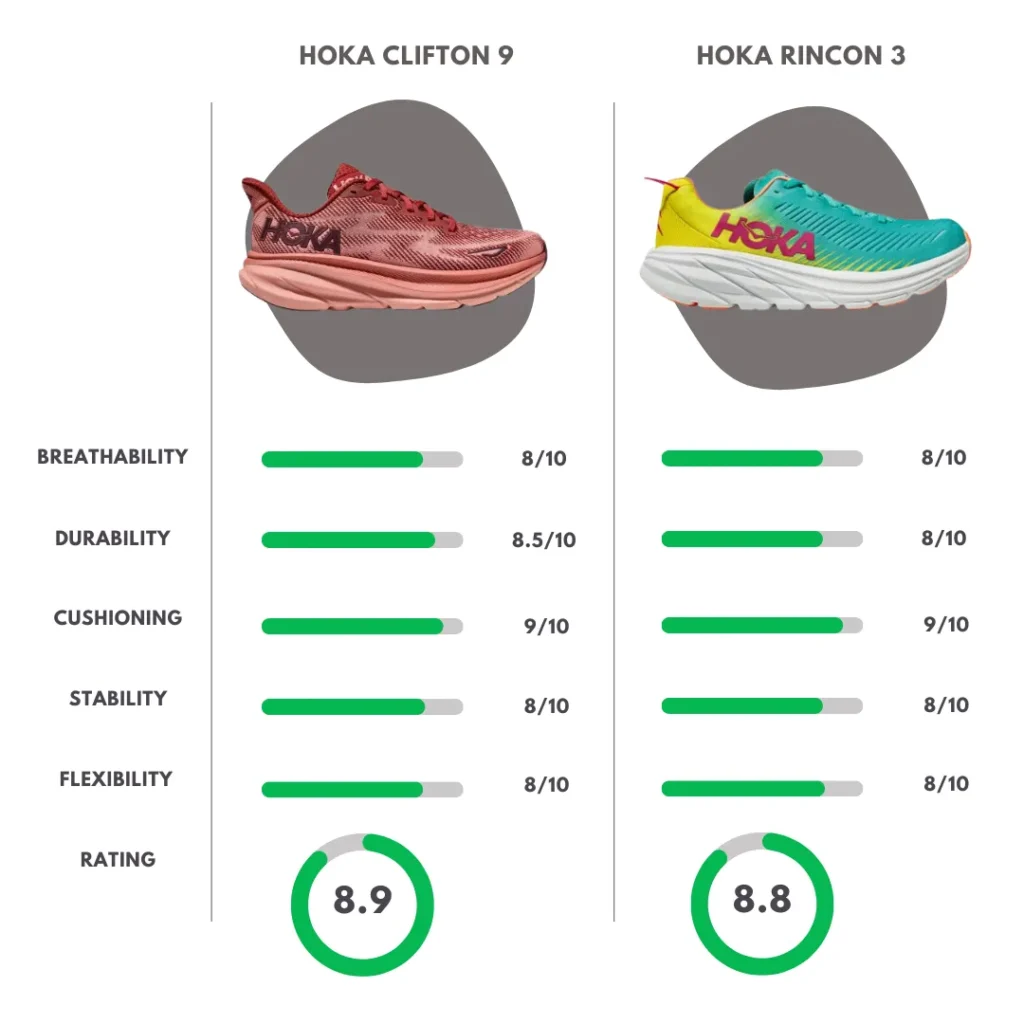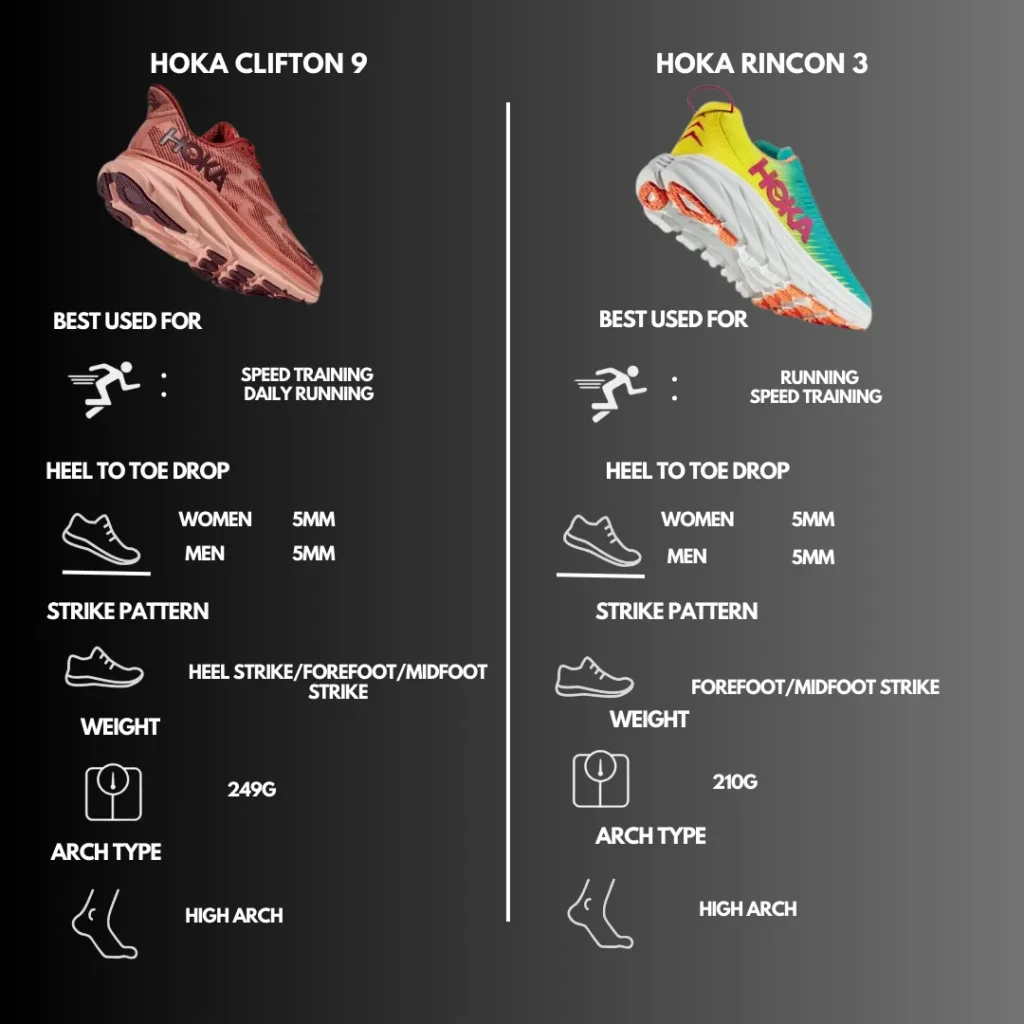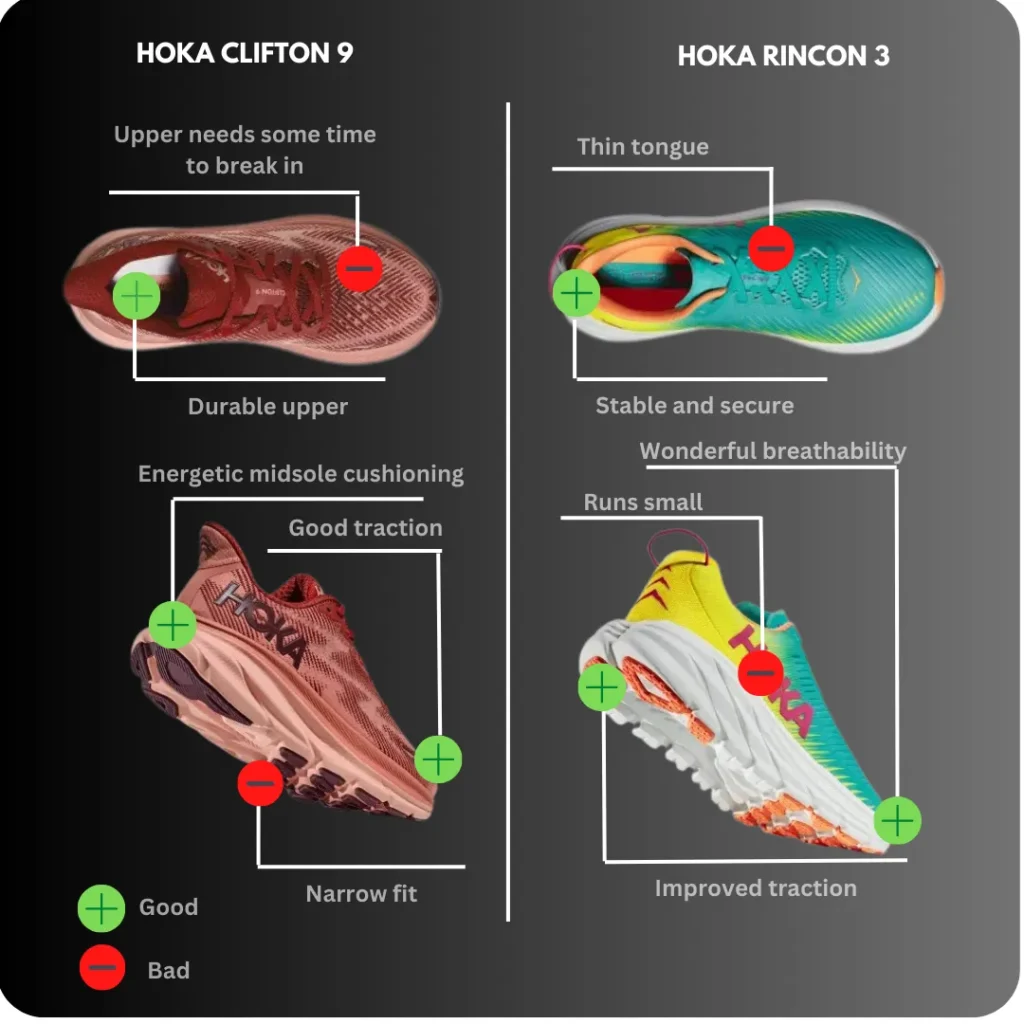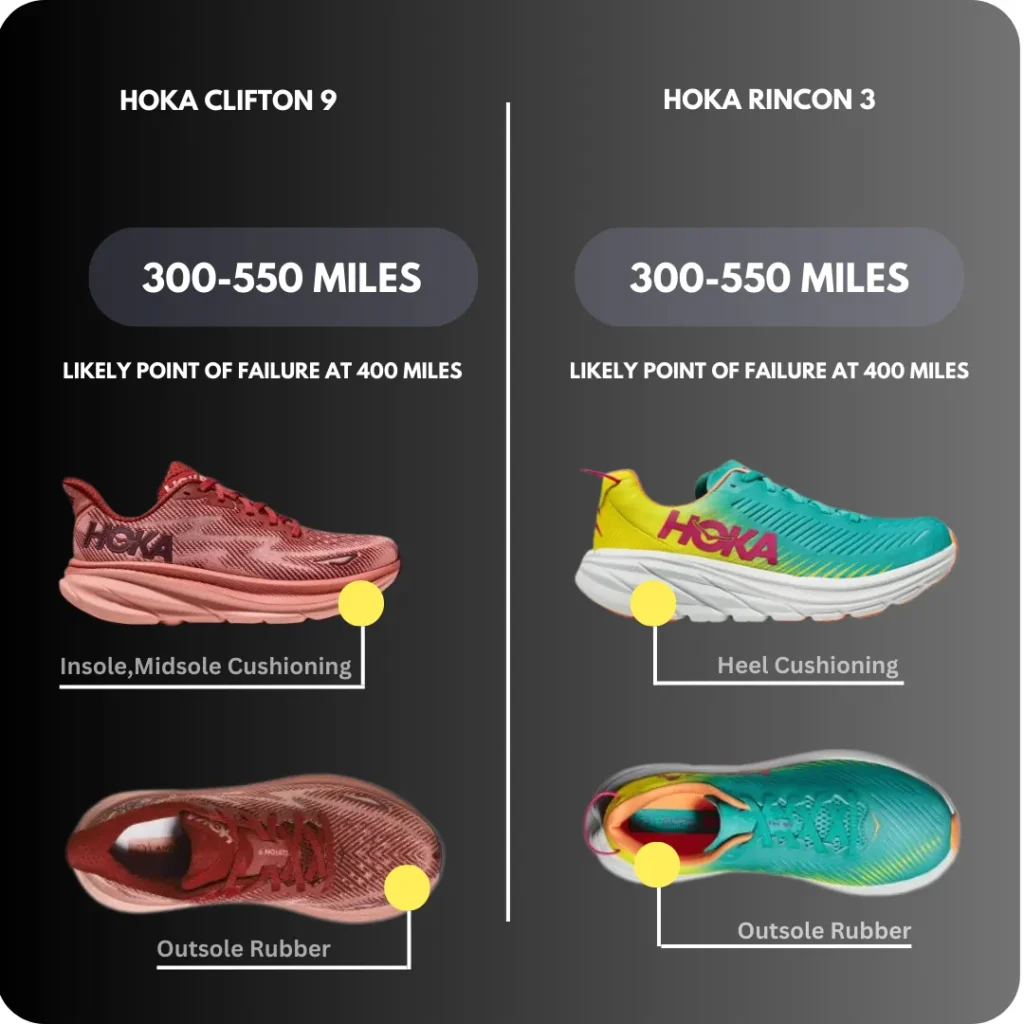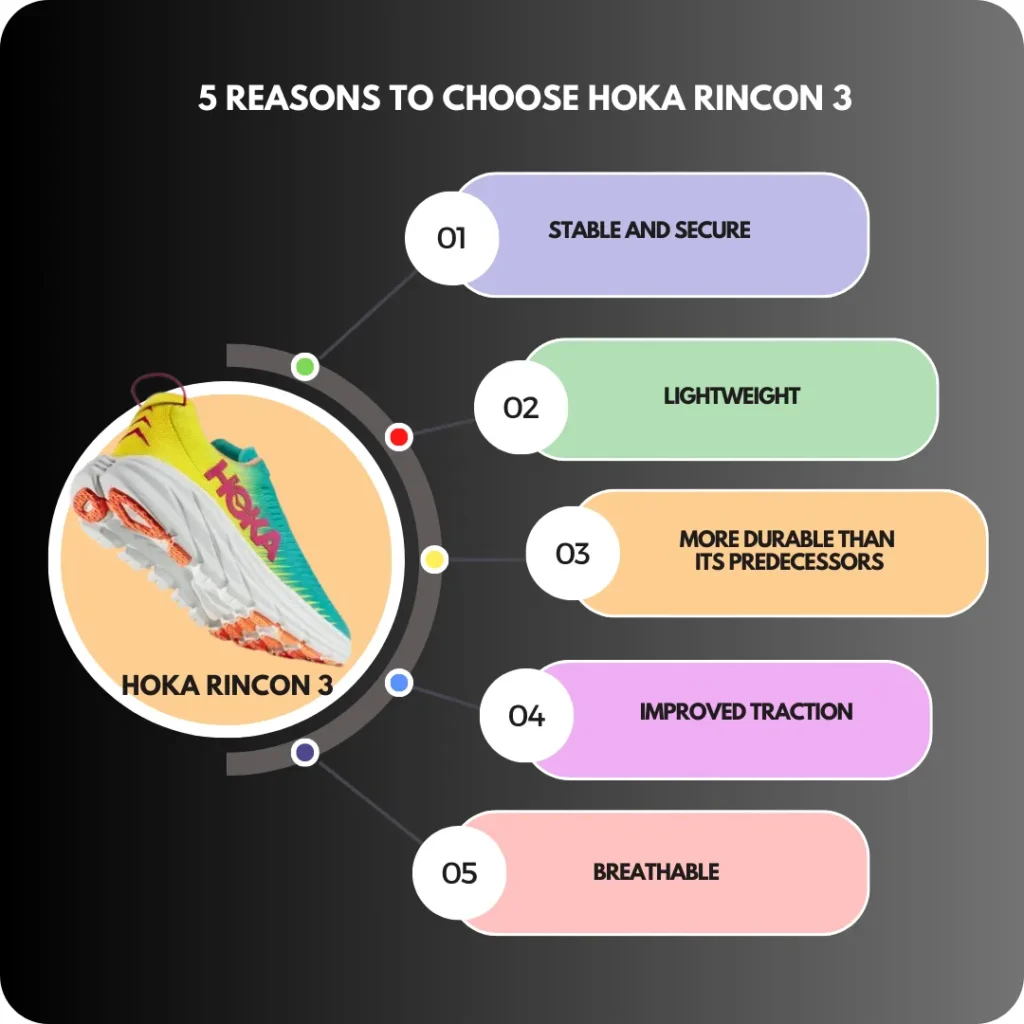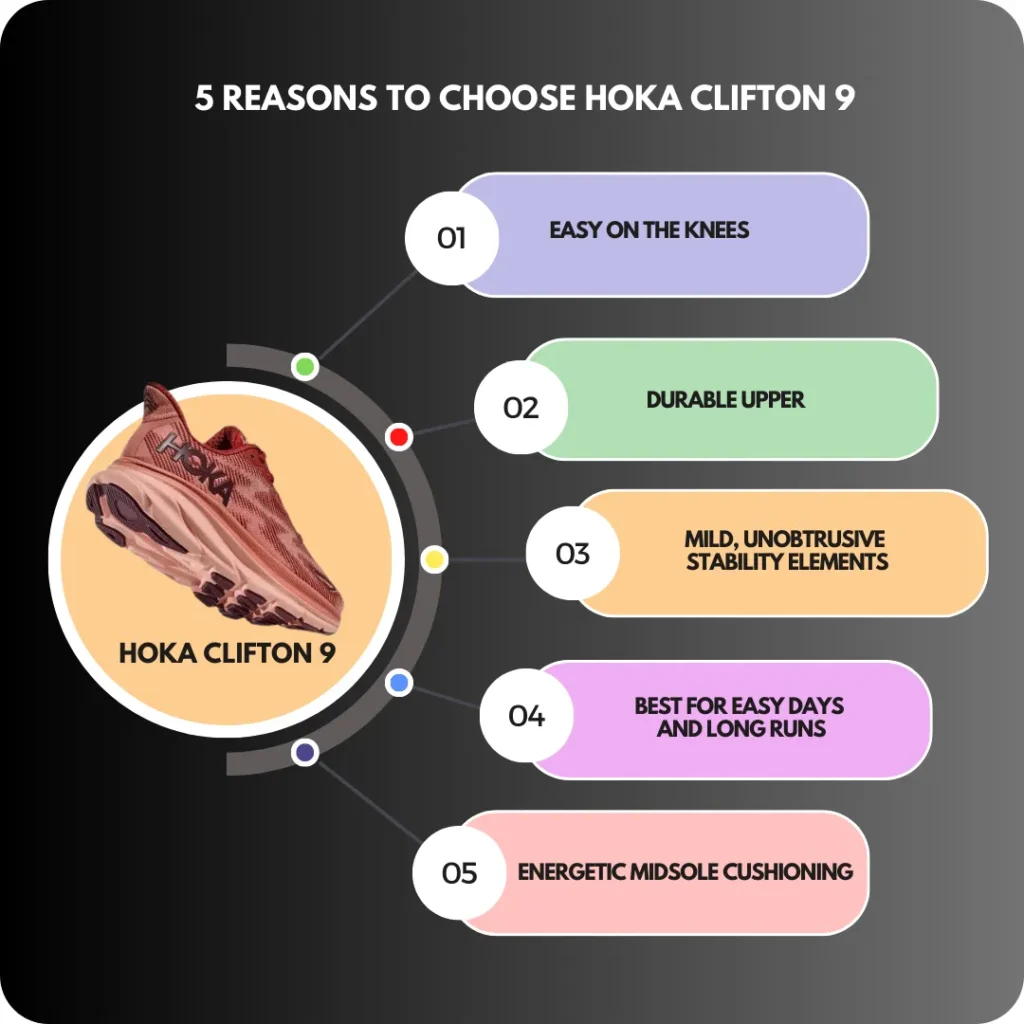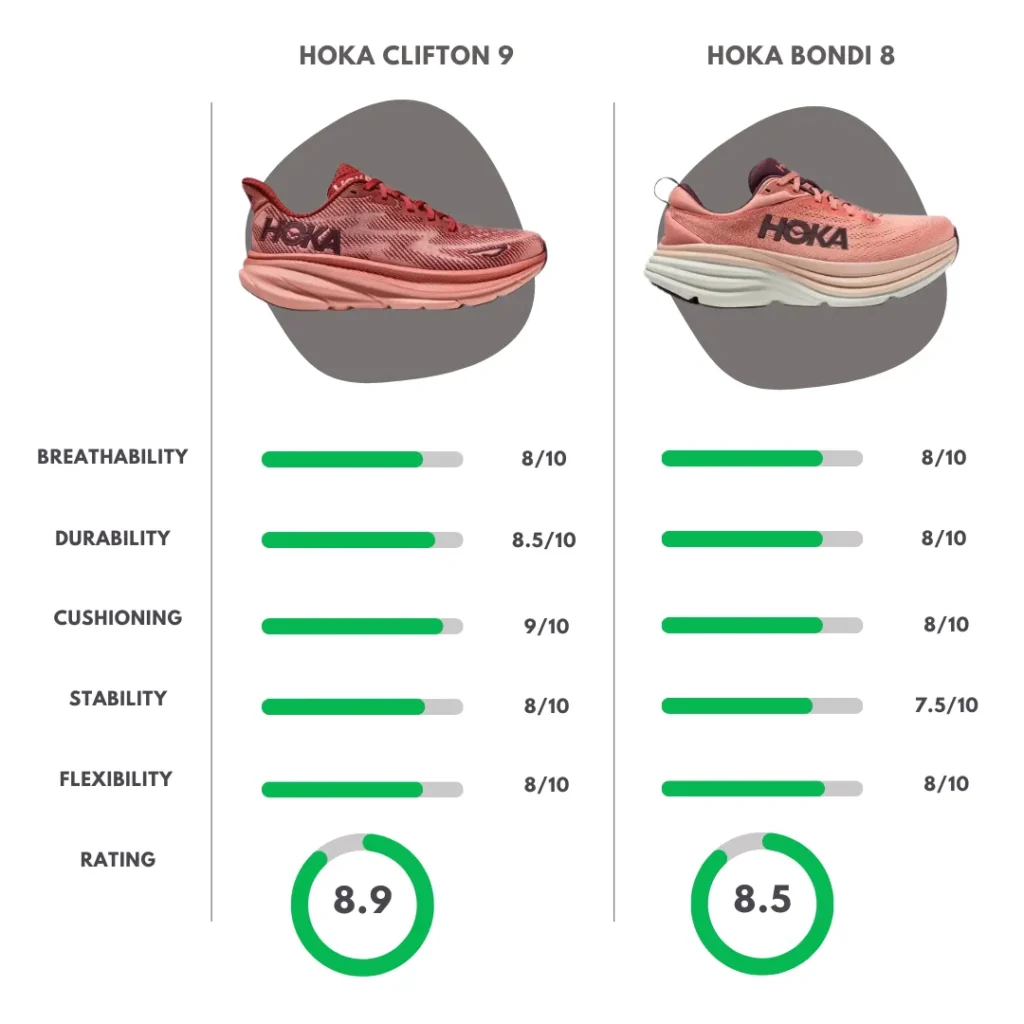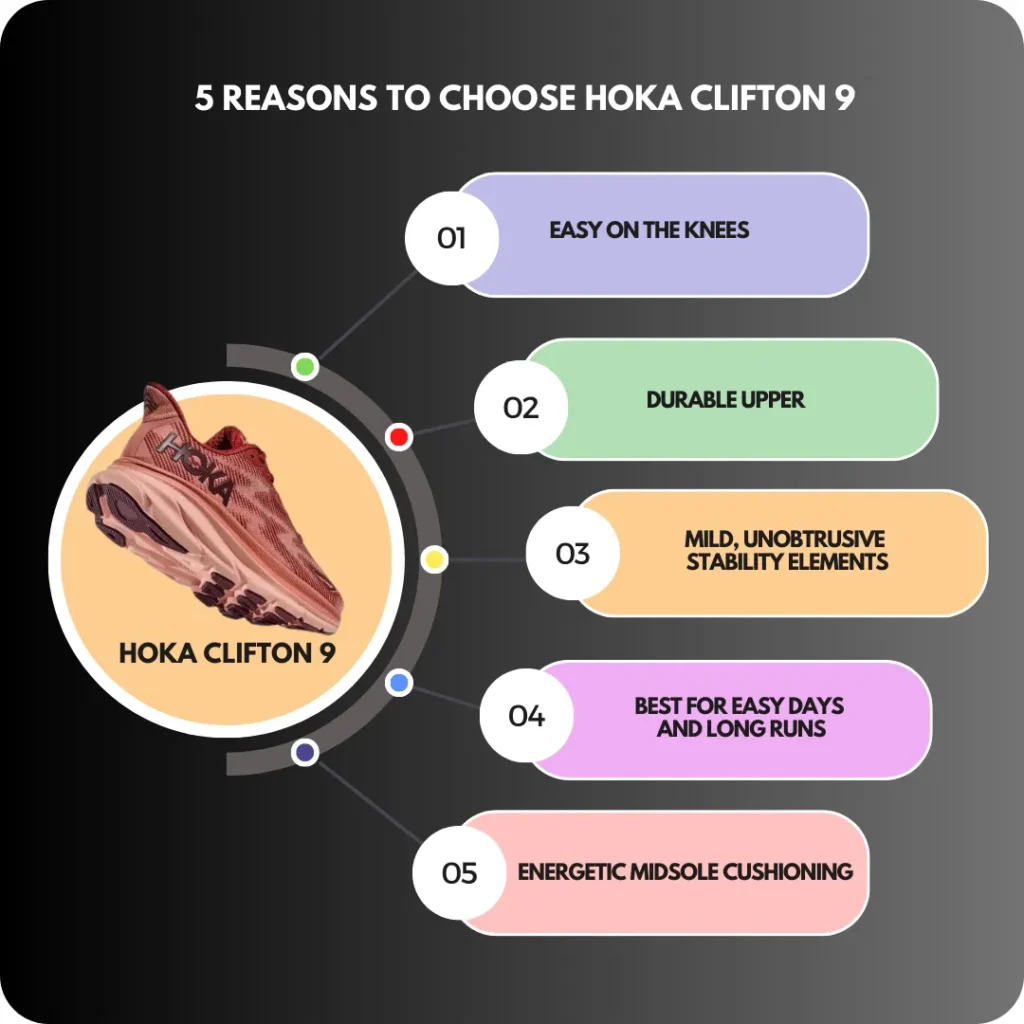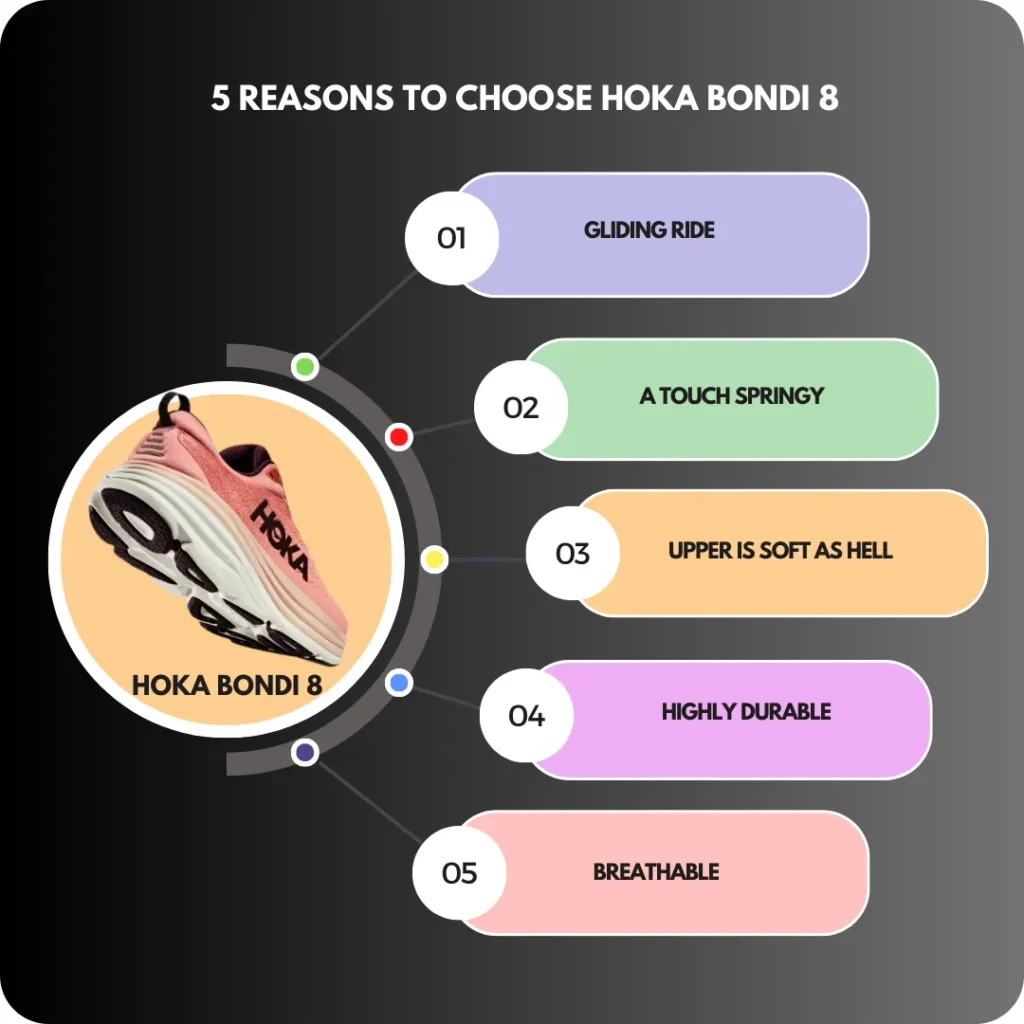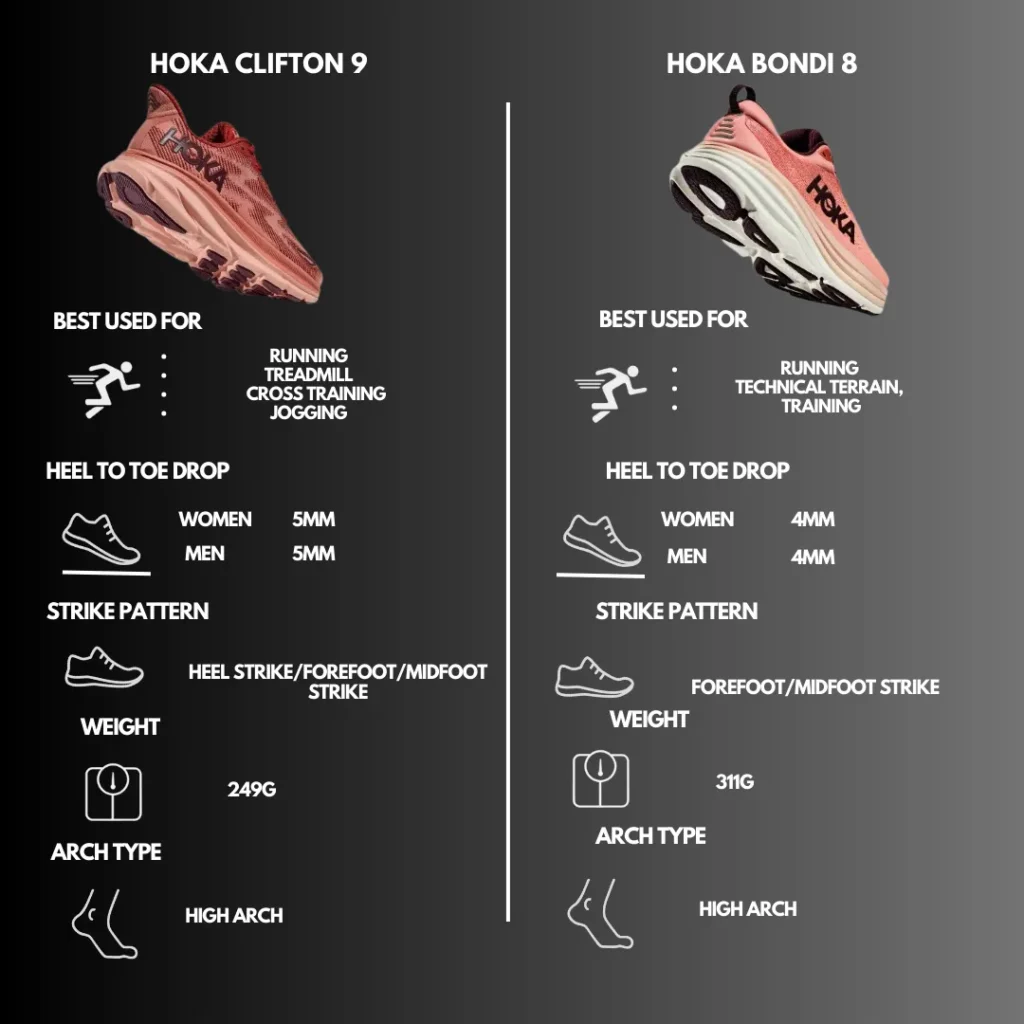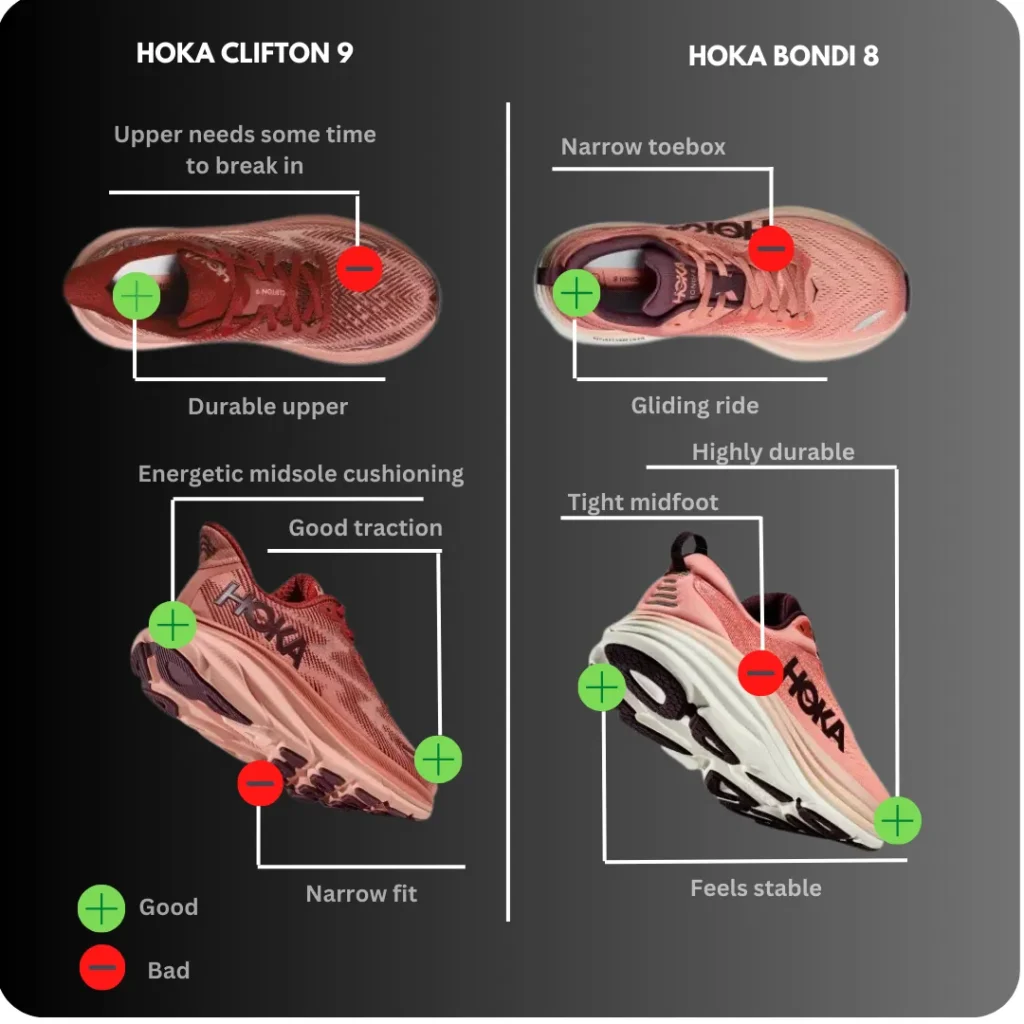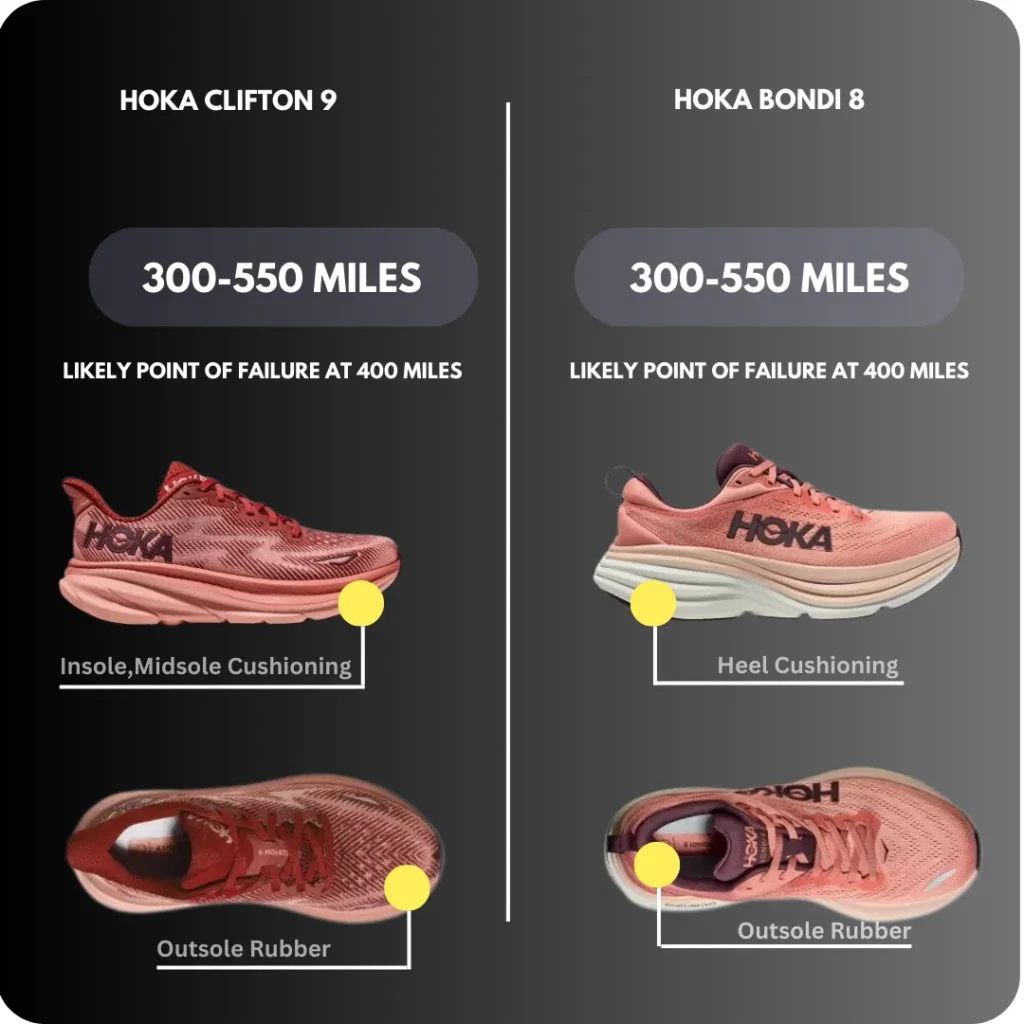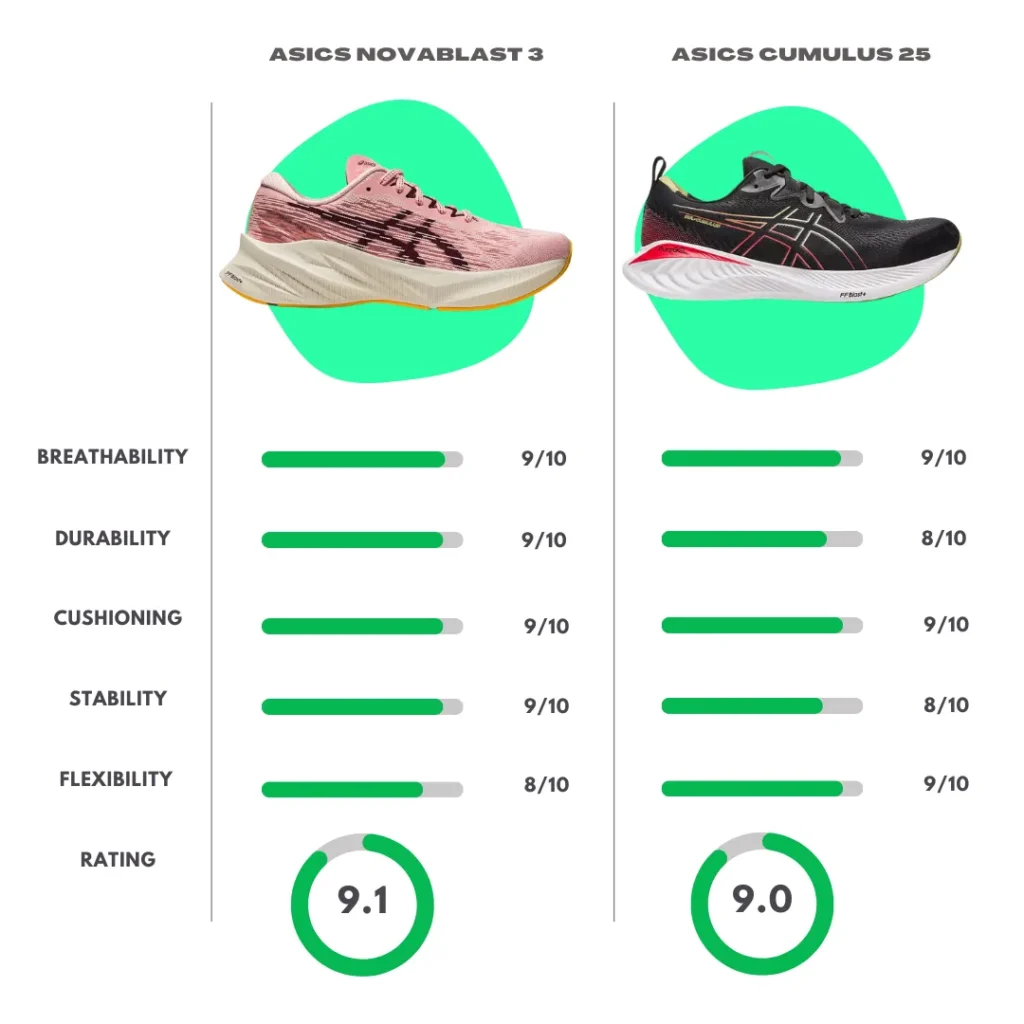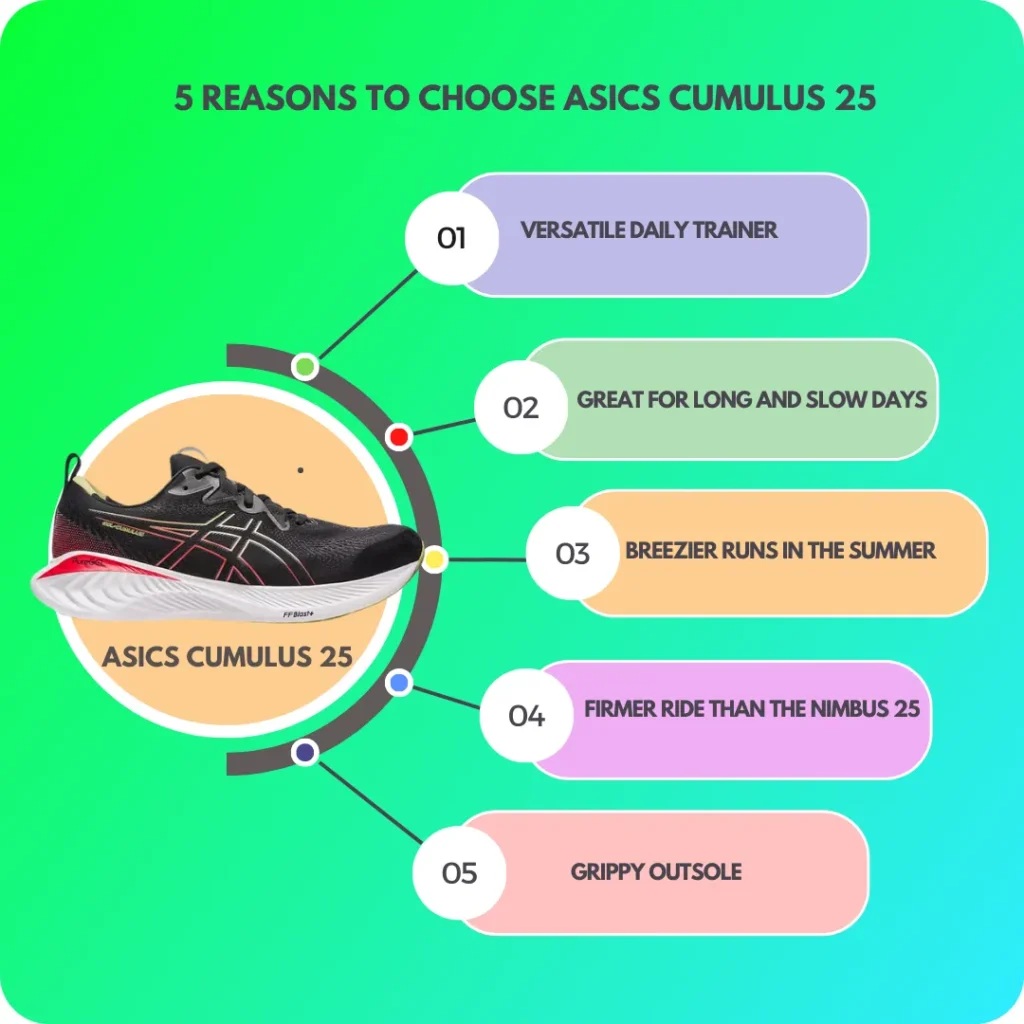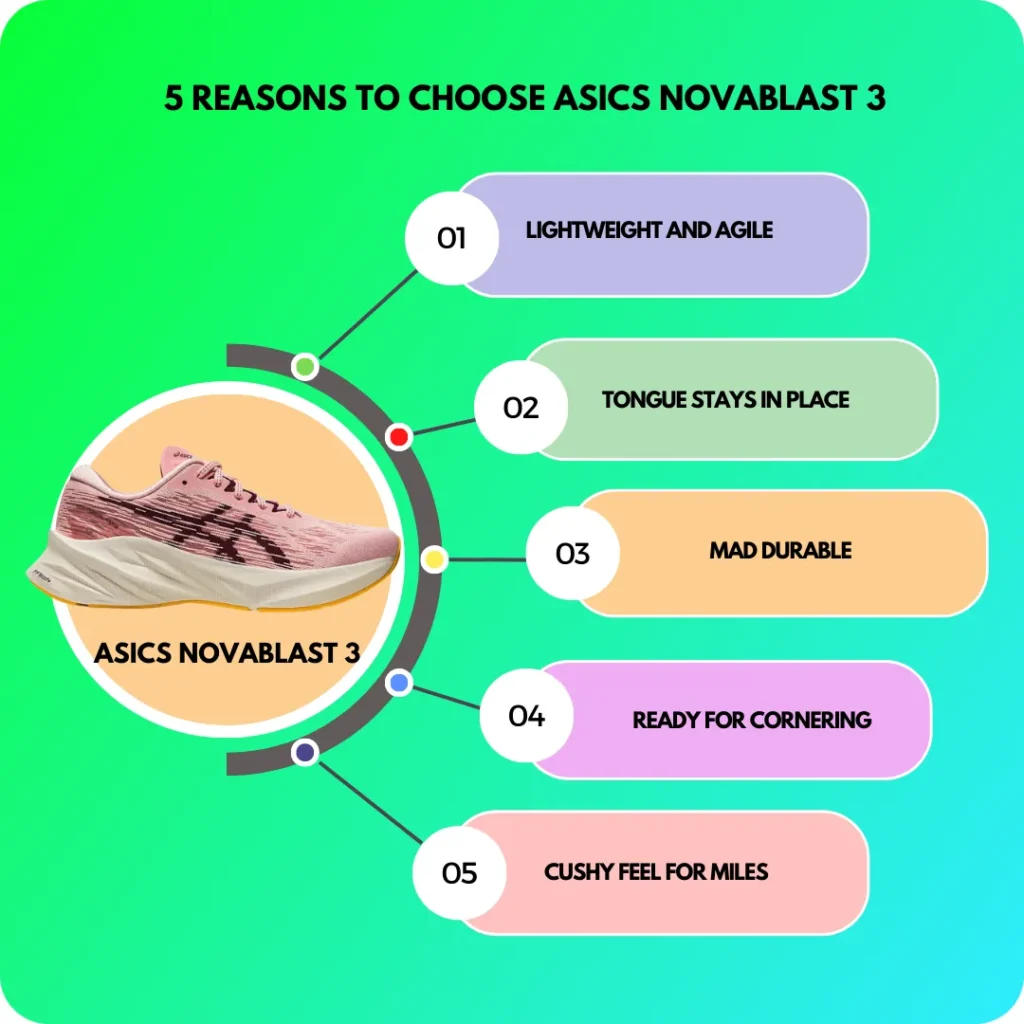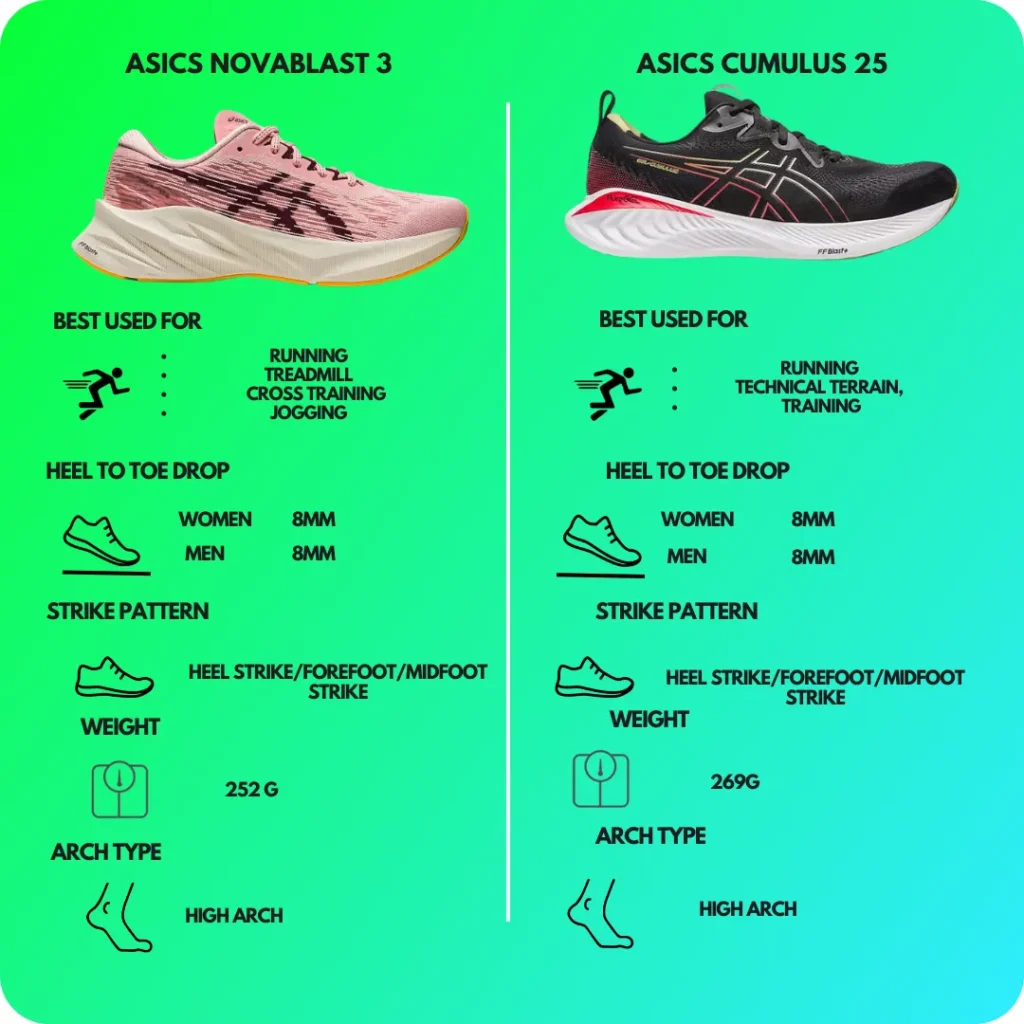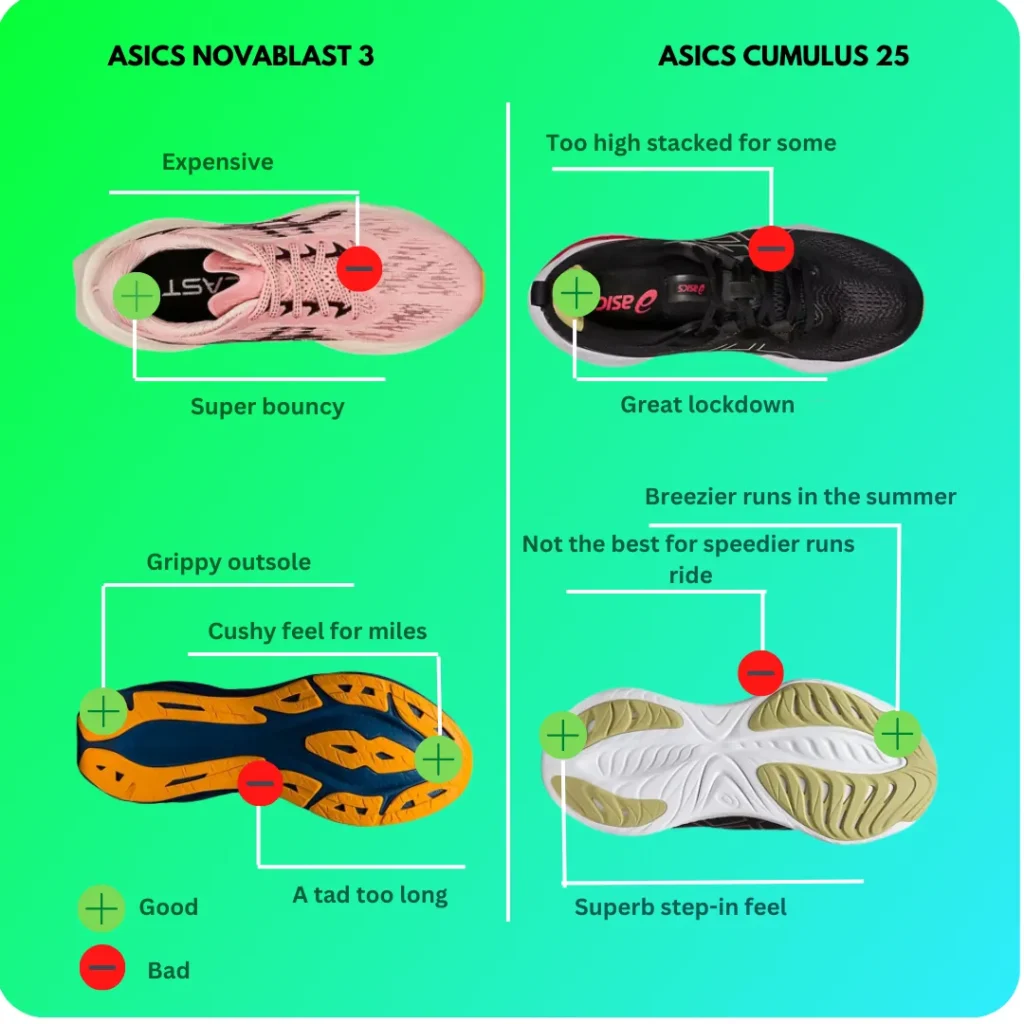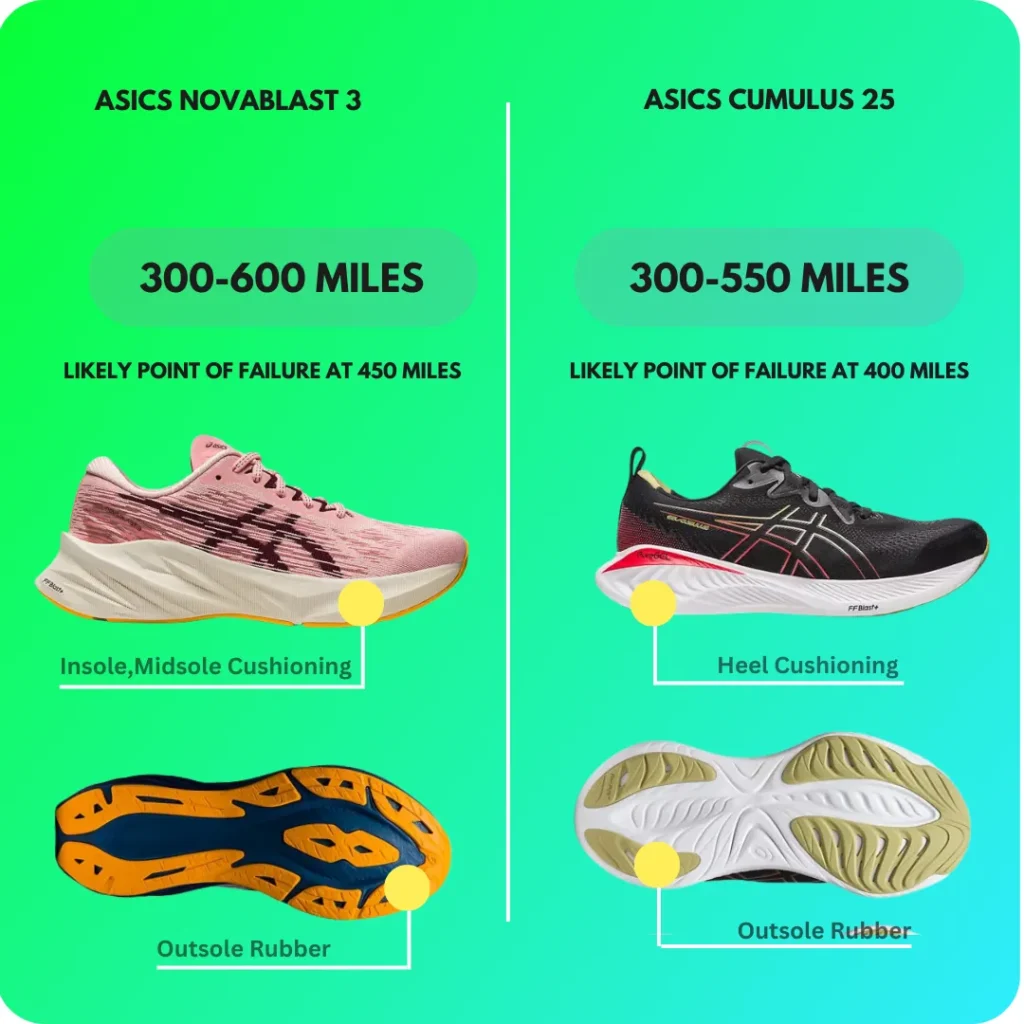Hoka Arahi 6 vs Hoka Mach 5: Unraveling the Ultimate Running Shoe Showdown
When it comes to choosing the perfect pair of running shoes, the market offers a plethora of options that can sometimes leave even the most seasoned runners in a state of bewilderment.
Among the top contenders in the realm of performance footwear, two shining stars, the Hoka Arahi 6 and the Hoka Mach 5, emerge as powerhouses in the running shoe arena.
In this comprehensive comparison, we delve into the intricate details, features, and benefits of these two remarkable running companions to help you make an informed decision that aligns with your unique running aspirations.
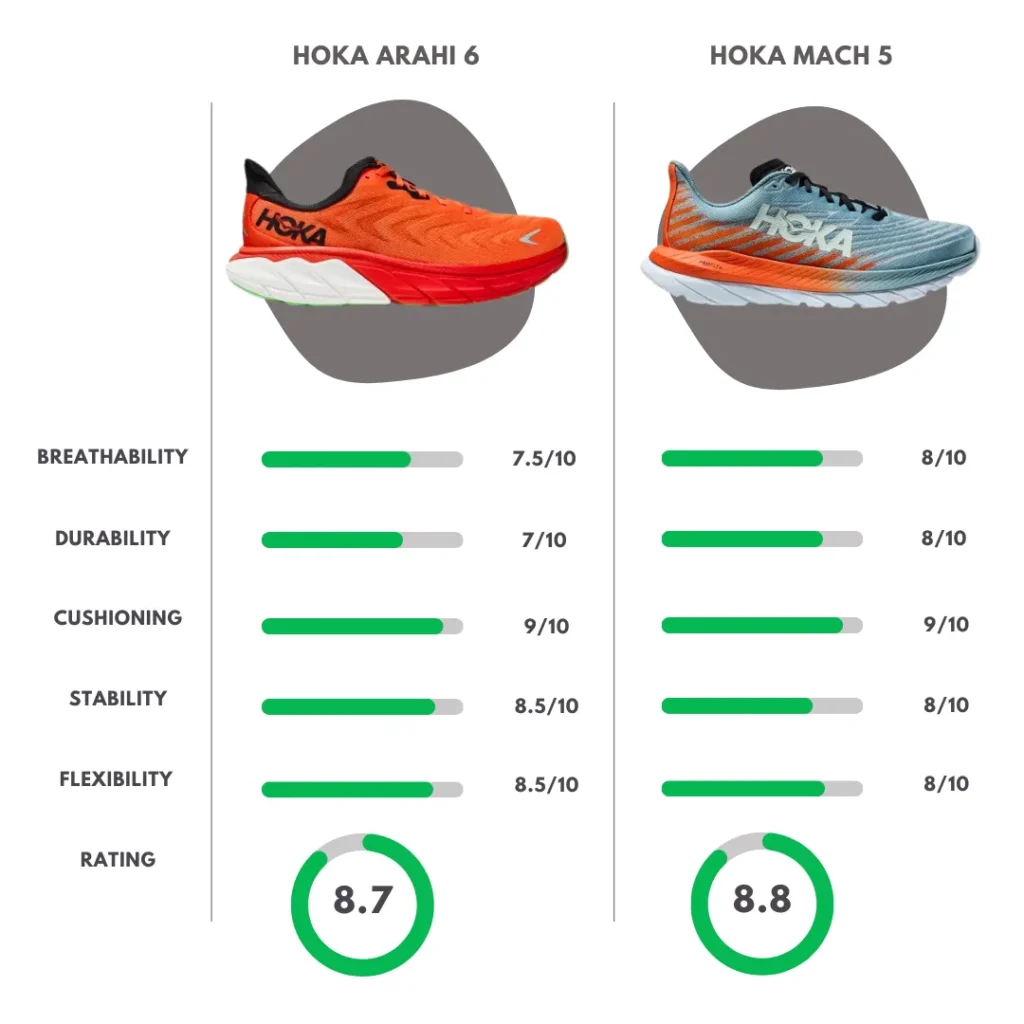
Technical Comparison Table – Hoka Arahi vs Hoka Mach
| Category | Hoka Arahi 6 | Hoka Mach 5 |
| Cushioning Technology | EVA Midsole with J-Frame | PROFLY Midsole |
| Heel Drop | 5mm | 5mm |
| Weight | Moderate – Approx. 9.3 oz | Lightweight – Approx. 7.7 oz |
| Upper Material | Engineered Mesh and Thin Overlays | Engineered Mesh and Thin Overlays |
| Breathability | Good | Good |
| Fit | Snug and Supportive | Snug and Supportive |
| Arch Support | Stability and Supportive | Neutral to Minimal Support |
| Outsole Material | Rubberized Foam | Rubberized Foam |
| Traction | Reliable Grip | Reliable Grip |
| Flexibility | Moderate Flexibility | Standard Flexibility |
| Pronation Control | Overpronation Support | None |
| Stability | Stability Control | Neutral |
| Durability | Durable | Durable |
| Best Use | Stability and Support | Versatile Running |
| Recommended Distance | Short to Medium Distances | Short to Medium Distances |
| Heel Counter | External Heel Counter | External Heel Counter |
You May Also Like – Hoka One One Arahi 6 vs Bondi 8: Which is Best For You?
Anatomy of Comfort: Hoka Arahi 6
The Hoka Arahi 6, a stalwart in the stability shoe category, boasts an array of cutting-edge features aimed at providing maximum comfort and support for runners seeking a controlled ride.
At its core, the Arahi 6 showcases an innovative J-Frame midsole technology that serves as a steadfast sentinel against overpronation.
This intelligent midsole design not only aids in maintaining a natural gait cycle but also offers a harmonious balance between cushioning and stability.
Embracing your feet with a plush yet secure fit, the Arahi 6’s upper mesh fabric wraps gently around your foot, allowing for ample breathability and flexibility.
The shoe’s well-padded collar and tongue ensure a cozy fit, minimizing the risk of friction-induced discomfort during those extended runs.
With every stride, the Meta-Rocker geometry of the Arahi 6 collaborates seamlessly with the midsole, propelling you forward with an efficient and energetic stride.
Also Read – Hoka Mach X vs Mach 5: Deciphering the Ultimate Running Shoe Showdown
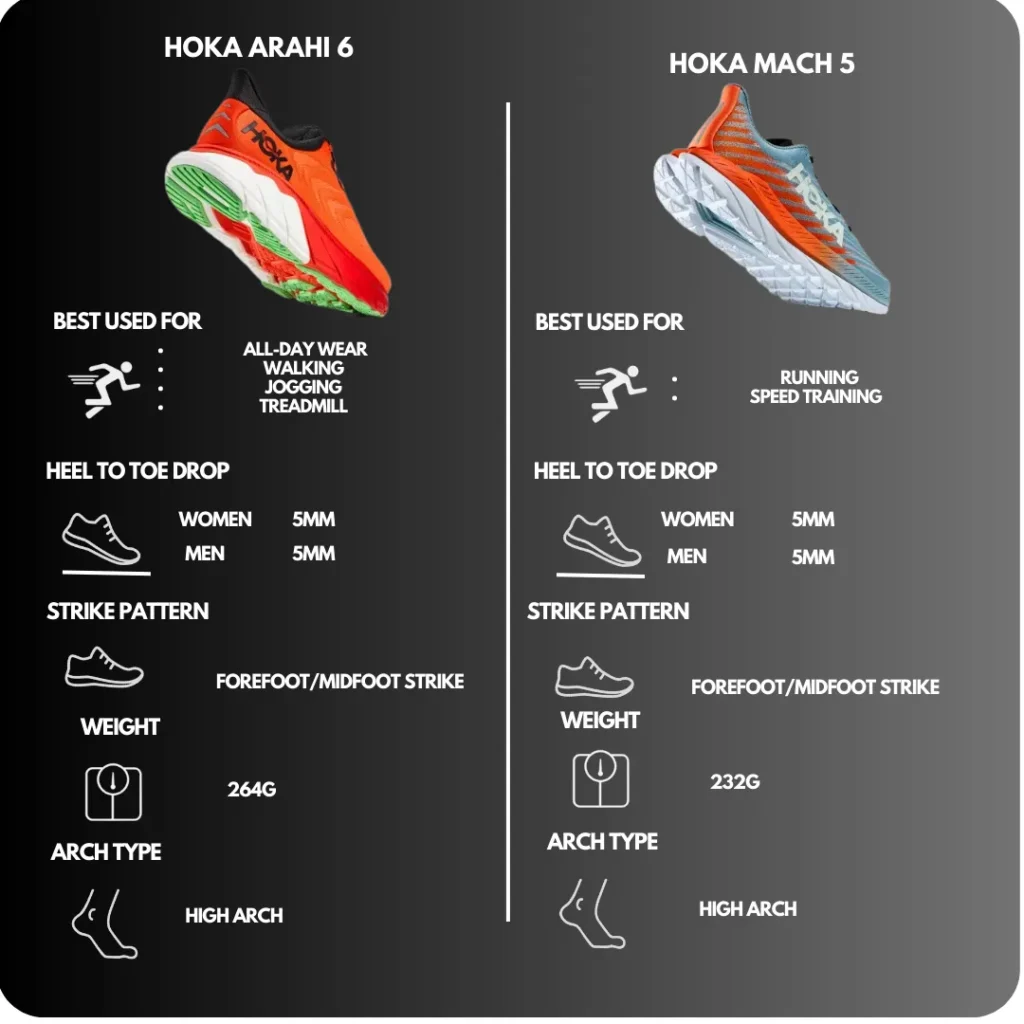
Also Read – Hoka Clifton 9 vs Bondi 8: Decoding the Ultimate Running Shoe Showdown
The Velocity of Performance: Hoka Mach 5
Stepping into the fast lane, the Hoka Mach 5 steps up as a fervent advocate for speed and agility.
Engineered to excel in tempo runs and speedwork, this lightweight marvel is equipped with the prowess to elevate your training sessions.
At the heart of the Mach 5’s supremacy lies the ProFly+ midsole, an innovation that infuses responsiveness and cushioning into every step. This dynamic midsole technology translates to a snappy ride that encourages swift transitions, perfect for pushing your limits during high-intensity workouts.
The Mach 5’s upper construction is a testament to precision and finesse.
Crafted to embrace your foot like a second skin, the breathable mesh promotes optimal airflow while the streamlined design reduces drag.
A reinforced heel counter further enhances stability, ensuring that each explosive stride is met with controlled precision.
The early-stage Meta-Rocker geometry not only grants an instinctive rolling motion but also imparts a natural flow to your gait, amplifying your forward momentum.
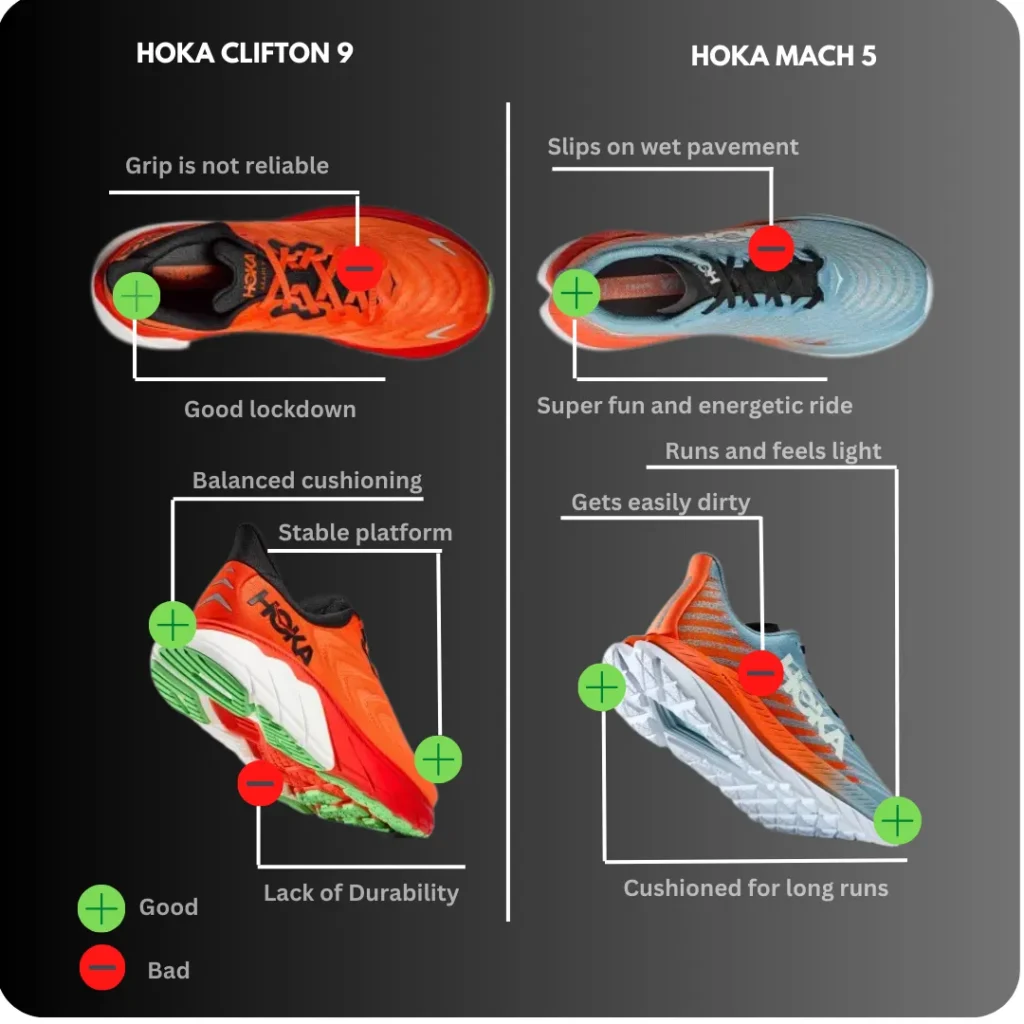
Also Read – Hoka Clifton 9 vs Arahi 6: Unveiling the Ultimate Running Shoe Showdown
The Crossroads: Making the Right Choice
As you stand at the crossroads of this footwear dilemma, the choice between the Hoka Arahi 6 and the Hoka Mach 5 hinges on your running objectives and personal preferences.
If you seek a harmonious blend of support and comfort to conquer the miles, the Arahi 6 emerges as a steadfast ally.
On the other hand, if your aspirations incline toward shaving seconds off your tempo runs and embracing the thrill of speed, the Mach 5 stands as a testament to agility and responsiveness.
Ultimately, both the Hoka Arahi 6 and the Hoka Mach 5 encapsulate the essence of excellence that defines the Hoka One One brand.
Whether you choose the path of stability or the pursuit of velocity, you’re guaranteed a running partner that embraces innovation, performance, and the unwavering commitment to elevate your running experience.
You May Also Read – Hoka Arahi 6 vs Hoka Gaviota 5: A Comprehensive Comparison
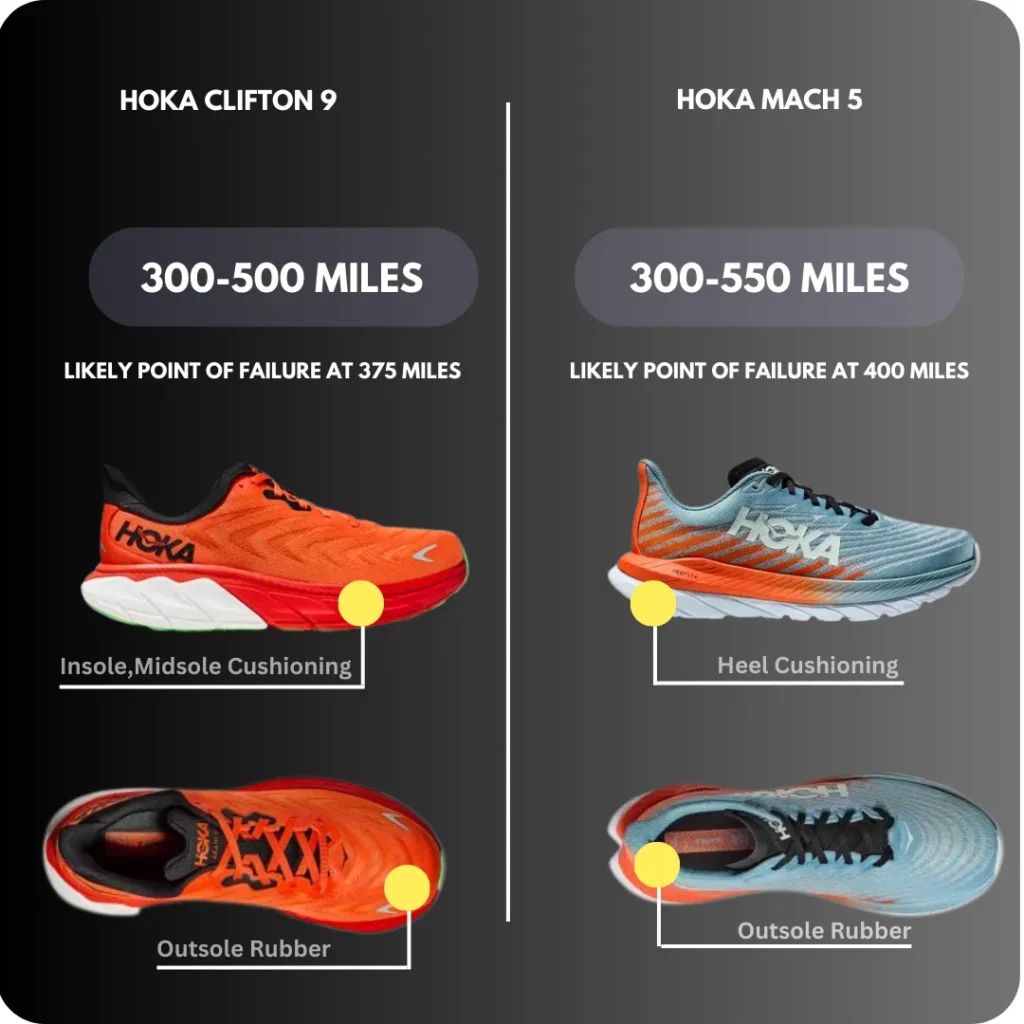
My Experience with using Hoka Arahi 6 and the Hoka Mach 5
It’s great to see your interest in these models, as they definitely have their unique features and benefits.
Now, speaking from personal experience, I’ve had the pleasure of testing both the Hoka Arahi 6 and the Mach 5 on my own running escapades.
Let me break it down for you.
The Hoka Arahi 6, in my opinion, is like that trusty sidekick that’s always got your back.
The stability it offers is truly top-notch, which has been a game-changer for my overpronation tendencies.
The J-Frame technology they’ve incorporated really does wonders in keeping my gait in check and providing that extra support I need, especially during longer runs.
On the other hand, the Hoka Mach 5 brings a whole different level of excitement to my speed workouts and tempo runs.
It’s like strapping on a pair of lightning bolts – seriously!
The ProFly+ midsole has this unique blend of cushioning and responsiveness that just propels me forward with an incredible energy return.
I’ve found myself consistently pushing my pace without feeling like I’m sacrificing comfort.
It’s become my go-to when I’m aiming to beat my personal bests.
So, which one’s my favorite, you ask?
Well, it honestly depends on the type of run I’m gearing up for.
When it’s all about those longer, more relaxed runs, the Arahi 6 takes the crown.
But when I’m in the mood to feel like I’m flying on the pavement, the Mach 5 steals the show.
It’s like having the best of both worlds in my shoe rotation.
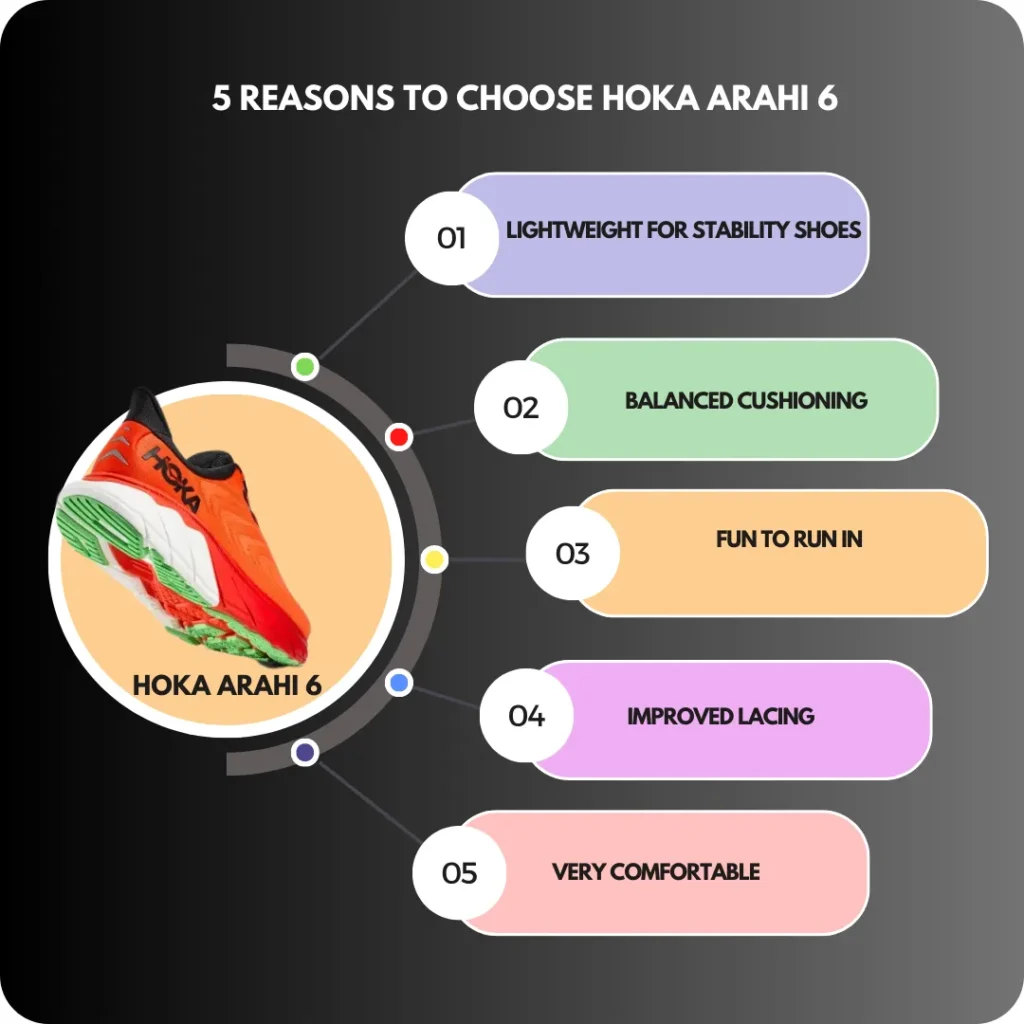
Related Comparison – Hoka Clifton 9 vs Hoka Mach 5: The Ultimate Running Experience
Final Verdict
In the grand tapestry of running shoe evolution, the Hoka Arahi 6 and the Hoka Mach 5 emerge as two formidable threads, each weaving a distinct narrative of comfort, support, and speed.
As you lace up your running shoes and embark on your journey, rest assured that whether you tread the path of stability or the realm of velocity, the Hoka Arahi 6 and the Hoka Mach 5 stand ready to be your trusted companions, propelling you forward toward your running aspirations with unparalleled dedication and style.
Also Read – Hoka Arahi 6 vs Rincon 3: Unraveling the Best Choice for Your Run
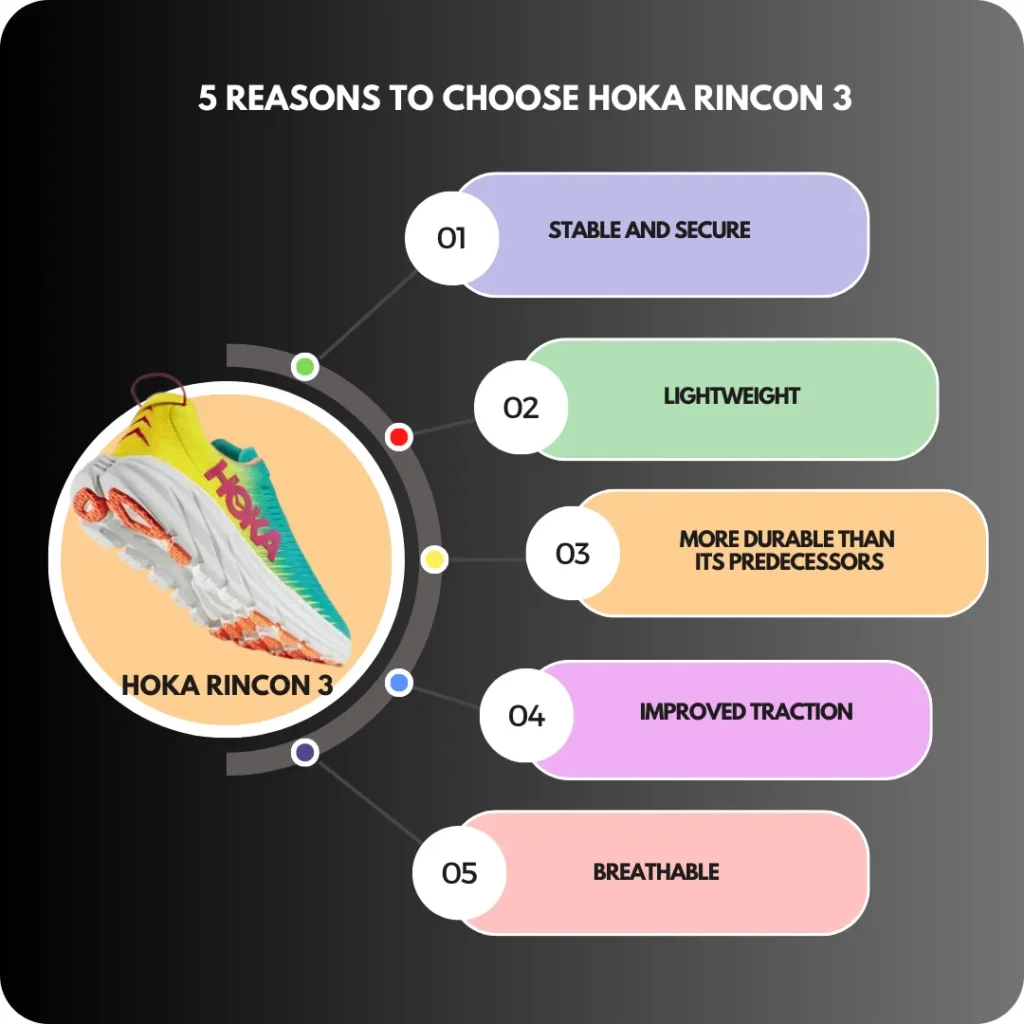
FAQs
What are the key differences between the Hoka Arahi 6 and Mach 5?
- The Hoka Arahi 6 is renowned for its stability and support, designed to aid overpronation with its J-Frame midsole technology.
- The Hoka Mach 5, on the other hand, is optimized for speed and agility, boasting a ProFly+ midsole that offers responsive cushioning for tempo runs and speedwork.
Which type of runner is best suited for the Hoka Arahi 6?
The Hoka Arahi 6 is an ideal choice for runners with mild to moderate overpronation, seeking a balance between cushioning and stability for their daily runs.
Can the Hoka Mach 5 be used for long-distance running?
Yes, the Hoka Mach 5’s lightweight design and responsive ProFly+ midsole make it suitable for long-distance running, offering both comfort and energy return.
How does the upper construction differ between the two models?
The Hoka Arahi 6 features a breathable upper mesh fabric that wraps around the foot, providing a secure fit and enhanced airflow.
The Hoka Mach 5’s upper design prioritizes a streamlined fit and reduced drag, making it well-suited for runners aiming for quicker paces.
Which shoe offers a more natural and efficient gait cycle?
The Hoka Arahi 6 incorporates Meta-Rocker geometry to encourage a smooth and efficient rolling motion, aiding in a natural gait cycle.
The Hoka Mach 5’s early-stage Meta-Rocker geometry enhances forward momentum and ensures a fluid stride, perfect for high-paced workouts.
Are there any durability concerns with either model?
Both the Hoka Arahi 6 and Mach 5 are crafted with quality materials to withstand the demands of running. However, the choice between the two depends on your specific running style and preferences.
Do these models have good breathability for longer runs?
Yes, both the Hoka Arahi 6 and Mach 5 feature breathable upper constructions that promote airflow, ensuring a comfortable experience during extended runs.
Are the Hoka Arahi 6 and Mach 5 true to size?
Hoka generally advises that runners go half a size up from their regular shoe size for both the Arahi 6 and Mach 5 to ensure a proper fit.
Which shoe offers a more cushioned feel underfoot?
The Hoka Arahi 6 is designed to provide a balanced cushioning and stability experience, while the Hoka Mach 5 emphasizes a responsive and energetic ride.
Can I use the Hoka Arahi 6 and Mach 5 for different types of runs?
Absolutely! The Hoka Arahi 6 is versatile for various types of runs, especially for those seeking stability. The Hoka Mach 5 excels in speed-focused workouts and tempo runs, adding variety to your training routine.
Hoka Arahi 6 vs Hoka Mach 5: Unraveling the Ultimate Running Shoe Showdown Read More »
